 | IN DISCUSSION
| IN DISCUSSION
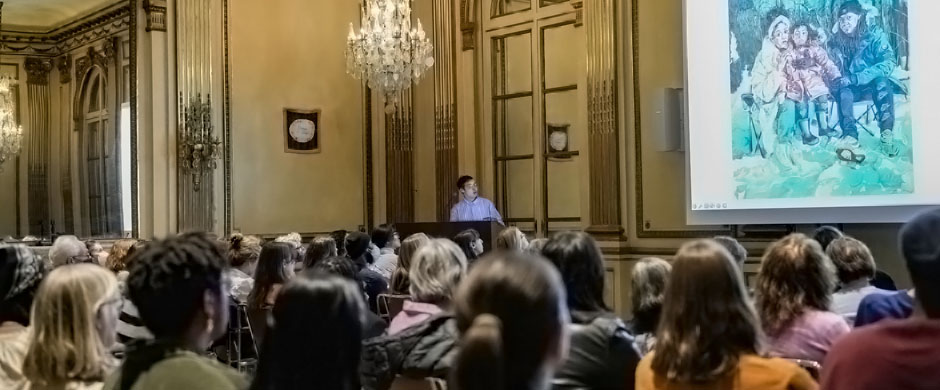
Events Archive
2021
February 9, 2021
Series: Artists at the Institute
Speaker: Patty Chang
Description: Patty Chang discusses her practice starting from performance, moving through video, expanding to research projects such as the acclaimed exhibition titled Patty Chang: The Wandering Lake 2009-2017 at the Queens Museum in New York, up to her current multichannel project Milk Debt on view at Pioneer Works in Red Hook, Brooklyn from March 5 to May 16, 2021. Chang is an artist working in performance, video, writing, and installation. Her early performance work was influenced by 1960s and '70s performance work, as well as identity politics of the 1980s and '90s. More recently, her work has been focused on site-specific, performative, narrative projects that deal with cultural imaginaries, the environment, and the body. Chang received her BA from the University of California, San Diego. Her work has been exhibited nationwide and internationally at such institutions as the Museum of Modern Art, New York; Guggenheim Museum, New York; New Museum, New York; BAK, Basis voor actuele Kunst, Utrecht; the Hammer Museum, Los Angeles; Fri Art Centre d’Art de Freibourg, Switzerland; Chinese Arts Centre, Manchester, England; the Museum of Contemporary Art, Chicago; the M+ Museum, Hong Kong; the San Francisco Museum of Modern Art; the Times Museum in Guangzhou, China; and the Moderna Museet, Stockholm. She has received a Rockefeller Foundation Grant, a Creative Capital Award, a finalist for the Hugo Boss Prize, a Guna S. Mundheim Fellow in the Visual Arts at the American Academy in Berlin, a John Simon Guggenheim Memorial Foundation Fellow, and an Anonymous Was a Woman Grant. She teaches at the University of Southern California. She lives and works in Los Angeles.
February 16, 2021
Title: Jonathan Brown, No solo Velázquez
Speakers: Jordana Mendelson, Director of the King Juan Carlos I Center of NYU; Estrella de Diego, Professor of Modern and Contemporary Art History at the Universidad Complutense in Madrid; Robert Lubar Messeri, Associate Professor of Modern Art at the Institute of Fine Arts, NYU; Professor Edward Sullivan, the Helen Gould Shepard Professor of the History of Art at the Institute of Fine Arts, NYU; Professor Reva Wolf, Professor of Art History at the State University of New York at New Paltz; Dr. Miguel Falomir, Director of the Museo Nacional del Prado; Francisco Chaparro, Professor Brown's last Ph.D. student, and the editor and translator of the volume.
Description: This event will celebrate the publication of Jonathan Brown's new collection of essays, No solo Velázquez (Madrid: Cátedra, 2020).
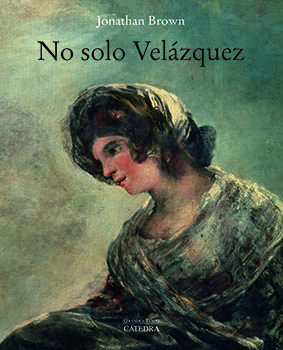
The event is co-sponsored by the Institute of Fine Arts and the King Juan Carlos I Center of NYU. Moderated by Jordana Mendelson (Director of the KJCC), with brief introductions by Estrella de Diego (Universidad Complutense de Madrid) and Robert Lubar Messeri (NYU/IFA), four speakers will comment on Professor Brown's texts: Professor Edward Sullivan (NYU/IFA), Professor Reva Wolf (SUNY New Paltz), Dr. Miguel Falomir (Director, Museo del Prado), and Francisco Chaparro (Professor Brown's last Ph.D. student, and the editor and translator of the volume).
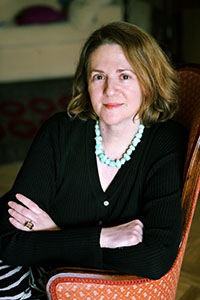
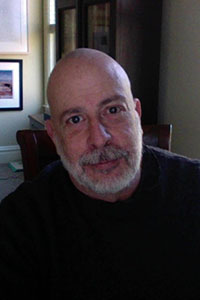
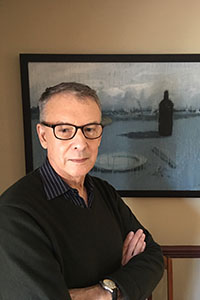
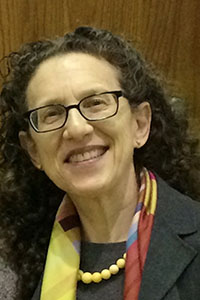
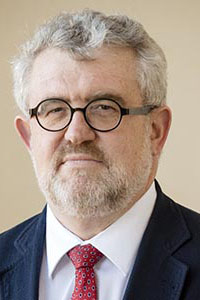
He has been a Fulbright fellow at the Institute of Fine Arts at New York University (1994-1995) and Andrew Mellon Professor at the Center for Advanced Studies in the Visual Arts of the National Gallery of Art in Washington (2008-2010).
He is the author of several books and dozens of articles on Spanish and Italian Renaissance art and member of the Scientific Committee of the Fondazione Tiziano in Pieve di Cadore and the editorial boards of several magazines. In 2017 was awarded the Mongan Prize by Harvard-Villa I Tatti University.
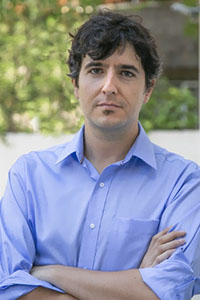


February 18, 2021 at 6:00pm
Series: Duke House Exhibition Symposium
Speakers: Dr. Beverly Adams, The Estrellita Brodsky Curator of Latin American Art, Department of Painting and Sculpture, The Museum of Modern Art; Dr. Lori Cole, Associate Director and Clinical Associate Professor, XE: Experimental Humanities & Social Engagement, New York University; Dr. Tatiana Flores, Professor, Art History & Latino and Caribbean Studies, Rutgers University; Dr. Susanna Temkin, Curator, El Museo del Barrio; Moderated by Dr. Edward J. Sullivan, Deputy Director, Helen Gould Shepard Professor in the History of Art, Institute of Fine Arts and Department of Art History, New York University. Organized by PhD candidate and co-curator Megan Kincaid.
Title: New Approaches to Fanny Sanín: Women Artists and Geometric Abstraction
Description: The Institute of Fine Arts is pleased to present New Approaches to Fanny Sanín: Women Artists and Geometric Abstraction, a panel discussion tracing the contributions of women artists to geometric abstraction. This event is held in conjunction with Fanny Sanín’s New York: The Critical Decade, 1971–1981, a solo exhibition exploring Sanín’s evolving practice during her first years in New York City. On view at The James B. Duke House, Fanny Sanín’s New York was made possible by support from the Institute for Studies on Latin American Art (ISLAA).
The panel features the presentations and perspectives of leading scholars Dr. Beverly Adams, Dr. Lori Cole, Dr. Tatiana Flores, and Dr. Susanna Temkin. Coinciding with a raft of scholarship that has enlivened the developments and styles engineered by women artists working in this idiom, the panel will contextualize Sanín’s work within this discourse. Moreover, this discussion seeks to reexamine the modernist understanding of geometric abstraction’s supposed “purity” through the critical lenses of gender, race, and nationality.
Dr. Beverly Adams is the Estrellita Brodsky curator of Latin American art at The Museum of Modern Art, New York. Before joining MoMA, Adams was Curator of Latin American art at the Blanton Museum at the University of Texas at Austin. With Natalia Majluf, Adams most recently organized The Avant-garde Networks of Amauta: Argentina, Mexico, and Peru in the 1920s (2019). The catalogue for this exhibition was awarded the Association for Latin American Art Arvey Foundation Exhibition Catalogue Award.
Dr. Lori Cole is Clinical Associate Professor and Associate Director of the interdisciplinary master’s program XE: Experimental Humanities & Social Engagement at New York University. She previously taught at Brandeis University, the Whitney Museum of American Art, and the Museum of Modern Art and her writing has been published in Artforum, Cabinet, Journal of Surrealism and the Americas, and The Oxford Critical and Cultural History of Modernist Magazines. She is the author of Surveying the Avant-Garde: Questions on Modernism, Art, and the Americas in Transatlantic Magazines (Penn State University Press, 2018).
Dr. Tatiana Flores is Professor of Latino and Caribbean Studies and Art History at Rutgers, The State University of New Jersey and Director of Visual and Performing Arts at Rutgers’ Center for Women in the Arts and Humanities. She is the author of Mexico’s Revolutionary Avant-Gardes: From Estridentismo to ¡30-30! (Yale University Press, 2013), winner of the 2014 Humanities Book Prize by the Mexico Section of the Latin American Studies Association. She curated the exhibition Relational Undercurrents: Contemporary Art of the Caribbean Archipelago for the Museum of Latin American Art as part of the Getty Foundation’s PST: LA/LA initiative. A 2017-18 Getty Scholar and member of the Harvard University Traveling Seminar on Afro-Latin American Art, Flores is President of the Association for the Study of the Arts of the Present (ASAP). She is currently co-editing the volume The Routledge Companion to Decolonizing Art History.
Dr. Susanna V. Temkin is Curator at El Museo del Barrio, and recently organized the museum’s fiftieth anniversary exhibition, Culture and the People: El Museo del Barrio, 1969-2019. She is currently one of the co-curators of ESTAMOS BIEN: La Trienal, the museum’s first national-scale survey of Latinx art. Prior to El Museo, she served as Assistant Curator at Americas Society in New York, as well as the research and archive specialist at the Cecilia de Torres, Ltd., where she assisted in co-authoring the digital catalogue raisonné of artist Joaquín Torres-García. Temkin earned her master’s and PhD degrees from the Institute of Fine Arts, New York University, where her research concentrated on modern art in the Americas, with a focus on Cuba. Temkin has published essays and reviews in the Rutgers Art Review, Burlington Magazine, and Hemispheres; contributed a chapter to the forthcoming exhibition catalogue, Alice Neel: People Come First (Metropolitan Museum of Art, New York) ; and authored the chronology of Concrete Cuba: Cuba Geometric Abstraction from the 1950s, produced by David Zwirner Books.
Moderated by Dr. Edward J. Sullivan, Deputy Director, Helen Gould Shepard Professor in the History of Art, Institute of Fine Arts and Department of Art History, New York University. Organized by PhD candidate and co-curator Megan Kincaid.
February 25, 2021 at 6:00pm
Series: Ancient Art and Architecture
Speakers: Roland Betancourt (UC-Irvine), Kathryn Howley (IFA), Stuart Tyson Smith (UC-Santa Barbara), Thelma K. Thomas (IFA)
Title: Approaches to Diversity in Antiquity
Description: In the wake of recent events in which alt-right and neo-Nazi groups have mobilized the ancient past as justification for white supremacy, it is more important than ever to critically examine the popular idea that the ancient world was a homogeneous place. Prof. Roland Betancourt (UC Irvine) and Prof. Stuart Tyson Smith (UCSB) will join the Institute’s Profs. Thelma K. Thomas and Kathryn Howley for a panel discussion on new scholarly approaches to diversity in antiquity, exploring how we might research different types of diversity in the ancient world and the ethical and methodological challenges that accompany such an endeavor.
Roland Betancourt is Professor of Art History and Chancellor's Fellow at the University of California, Irvine. He is also the Director of the Visual Studies Program. In the 2016-2017 academic year, he was the Elizabeth and J. Richardson Dilworth Fellow at the Institute for Advanced Study in Princeton. He is also the author of Byzantine Intersectionality: Sexuality, Gender, and Race in the Middle Ages (Princeton University Press, 2020), as well as Sight, Touch, and Imagination in Byzantium (Cambridge University Press, 2018) and Performing the Gospels in Byzantium: Sight, Sound, and Space in the Divine Liturgy (Cambridge University Press, 2021).
Stuart Tyson Smith is Professor of Anthropology at the University of California, Santa Barbara, and the Director of the UCSB Institute for Social, Behavioral and Economic Research. Since 2000 he has been co-director of the UCSB-Purdue Tombos Excavations in Sudan, which investigate an Egyptian colonial site of the late second-early first millennium BCE at the third cataract of the Nile. He is author of Wretched Kush (Routledge, 2003) and numerous articles on ethnicity, imperialism, and cultural entanglement in the ancient world.
March 9, 2021 at 6:00pm
Series: Pre-Columbian Society of New York
Speaker: George Lau, University of East Anglia, Norwich
Title: An Offering Context at Pashash (A.D. 200-600): Camelid Imagery and the Lordly Commitment in the Ancient Andes
Description: For studying early Andean peoples when camelids became increasingly incorporated into social and political life, there is perhaps no better case than the Recuay culture (ca. AD 1 - 700) of ancient Peru. Recent investigations at the site of Pashash (Ancash) uncovered an offering cache including fired clay camelid objects, in the form of pendants, an effigy vessel and small figurines. The items and the context provide important evidence for new engagements, physical and conceptual, with camelids during the Recuay period. In particular, they were among the earliest expressions of lordly ‘commitment’ to camelids as wealth, and their depiction on portable valuables emphasizes their public ceremonial use in feasts and sacrificial offerings. The camelid items indicate that herded camelids became resources for noble identity and authority in northern Peru, and were increasingly seen as crucial for community well-being and social reproduction.
March 10, 2021 at 12:00pm
Speakers: Edward Sullivan, Helen Gould Shepard Professor, Institute of Fine Arts, NYU; Sarah Kielt Costello, Associate Professor, University of Houston - Clear Lake; Paul R. Davis, Curator of Collections, The Menil Collection; John North Hopkins, Associate Professor, Institute of Fine Arts, NYU; Laetitia La Follette, President, Archaeological Institute of America, and Professor, University of Massachusetts Amherst
Title: Object Biographies: A Conversation on a New Volume
Description: Please join the Institute for a conversation about the new book Object Biographies: Collaborative Approaches to Ancient Mediterranean Art, published in January by the Menil Collection and distributed by Yale University Press. The volume brings together 14 scholars of ancient Mediterranean art, cultural heritage, provenance research and museology to investigate objects lacking a documented archaeological context. At the center of debates on collecting and collections of such objects is the role of the museum, curator, scholar and museum-going publics in responsible stewardship. The editors will discuss the de Menils, their collection and the thrust of the volume. Laetitia La Follette, President of the Archaeological Institute of America and Professor of Ancient Art and Archaeology at the University of Massachusetts Amherst, will respond on the volume. The conversation will be moderated by Prof. Edward Sullivan, Deputy Director of the Institute, with time for questions from the audience.
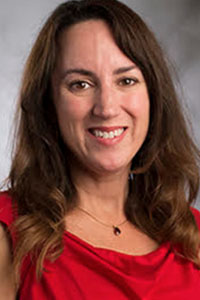
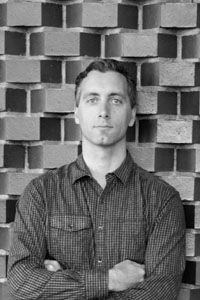
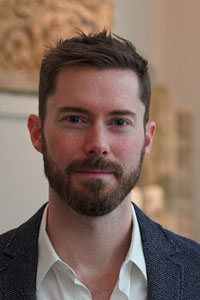
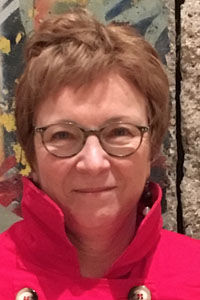
March 12, 2021 at 6:00pm
Series: China Project Workshop
Speakers: Marcus Bingenheimer (Department of Religion, Temple University) and moderated by Sebastian Heath (Institute for The Study of the Ancient World, NYU).
Title: The Historical Social Network of Chinese Buddhism as a Visualization Tool
March 18, 2021 at 12:00pm
Speakers: Michele D. Marincola, Sherman Fairchild Distinguished Professor of Conservation, Conservation Center of the Institute of Fine Arts, NYU; Lucretia Kargère, Conservator, Sherman Fairchild Center for Objects Conservation, The Metropolitan Museum of Art; Gerhard Lutz, Robert P. Bergman Curator of Medieval Art, Cleveland Museum of Art; CT; Cybele Tom, Doctoral Student, Doctoral Student in Art History, University of Chicago; Assistant Conservator of Objects, Art Institute of Chicago
Title: Michele Marincola and Lucretia Kargère, The Conservation of Medieval Polychrome Wood Sculpture
Description: This event will celebrate the publication of Michele Marincola's and Lucretia Kargère's new book,The Conservation of Medieval Polychrome Wood Sculpture (Getty Publications, 2020).
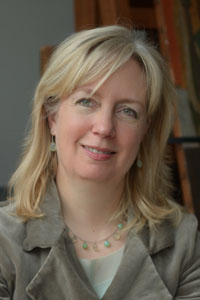
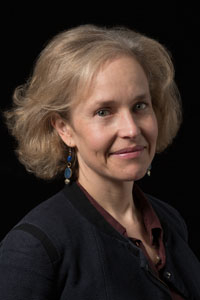
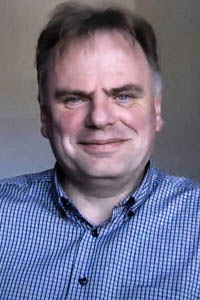
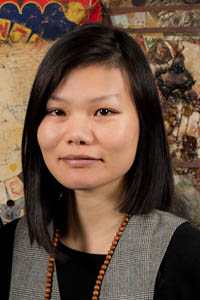
We are delighted to offer a discount for this new publication - please use code: GPMM21 for 20% off for "The Conservation of Medieval Polychrome Wood Sculpture" as well as Michele Marincola's previous publication, "Polychrome Sculpture" through April 30, 2021: shop.getty.edu, or code G2014 through yalebooks.co.uk.
March 22, 2021 at 6:00pm
Series: IFA Contemporary Asia
Speakers: Christopher Y. Lew, Nancy and Fred Poses Curator, the Whitney Museum of American Art; Ambika Trasi, Curatorial Assistant, the Whitney Museum of American Art; moderated by Professor Gayatri Gopinath, Director of the Center for the Study of Gender & Sexuality, NYU.
Description: IFA Contemporary Asia is pleased to present the annual Curators in Conversation public program with Christopher Y. Lew and Ambika Trasi. Presented on the occasion of the Whitney's current exhibition Salman Toor: How Will I Know, Lew and Trasi will address the curation of contemporary South Asian diaspora art and the exhibition's engagement with queer, diasporic, and transnational identity.
Christopher Y. Lew is the Nancy and Fred Poses Curator at the Whitney Museum of American Art. Lew oversees the emerging artist program at the Museum and was co-curator of the 2017 Whitney Biennial. Working with Ambika Trasi, he is co-curator of Salman Toor: How Will I Know. Lew has also organized Pope.L: Choir (2019), Kevin Beasley: A view of a landscape(2018), and mounted the first US solo exhibitions for Sophia Al-Maria, Rachel Rose, and Jared Madere. He also organized Lucy Dodd's large-scale installation that was part of the exhibition Open Plan (2016). Prior to joining the Whitney, he was Assistant Curator at MoMA PS1 and organized numerous exhibitions there. Lew has contributed to several publications including Art AsiaPacific, Art Journal, Bomb, Huffington Post, and Mousse.
Ambika Trasi is an artist and arts organizer based in Brooklyn, NY. Her research-based practice considers the coloniality of power within images and sites. Recent curatorial projects include Salman Toor: How Will I Know, co-curated with Nancy and Fred Poses Curator, Christopher Y. Lew at the Whitney Museum of American Art, and A Space for Monsters at Twelve Gates Arts, Philadelphia, featuring works by Maryam Hoseini, Kaveri Raina, and Anjuli Rathod. Previously, Trasi was the managing director and curatorial assistant at Asia Contemporary Art Week (ACAW), where she worked on projects such as Lee Mingwei: Sonic Blossom, The Metropolitan Museum of Art (2015); THINKING CURRENTS, Seattle Art Fair (2015); and four iterations of ACAW's signature performance program, FIELD MEETING, hosted at Asia Society (2014 & 2016), The Metropolitan Museum of Art (2015), the 56th Venice Biennale (a collateral event, 2015), and the Solomon R. Guggenheim Museum (2016). As a board member of the South Asian Women's Creative Collective from 2015-2019, Trasi was an exhibition manager for shows held at Queens Museum (2016) and Abrons Art Center (2017).
Gayatri Gopinath is Professor in the Department of Social and Cultural Analysis, and the Director of the Center for the Study of Gender and Sexuality at New York University. She works at the intersection of transnational feminist and queer studies, postcolonial studies, and diaspora studies. She is the author of Impossible Desires: Queer Diasporas and South Asian Public Cultures (2005) and Unruly Visions: The Aesthetic Practices of Queer Diaspora (2018).
Organizing committee: Eana Kim, Titi Deng, Kristie Lui, Kolleen Ku, and Cindy Qian.
March 23, 2021 at 6:00pm
Series: Silberberg Lecture
Speaker: Dr. Nicole R. Fleetwood, Professor of American Studies and Art History,
Rutgers University
Title: Marking Time: Art in the Age of Mass Incarceration
Description: Marking Time: Art in the Age of Mass Incarceration examines the impact of the carceral state on contemporary art and culture. Focusing on art made in US prisons and in collaboration with artists and activists across the nation, Dr. Fleetwood explores various aesthetic practices and media of incarcerated artists who use penal space, penal matter, and penal time to produce art about carcerality. Her presentation will discuss the archive of the visual culture of US prisons that she has amassed over the past decade. It will also consider the strategies and techniques that imprisoned artists employ to create visual documents about their captivity. Working with the meager supplies and under state punishment, imprisoned artists find ways to resist the brutality and isolation of prisons, as they cultivate radical modes of belonging and abolitionist visions.
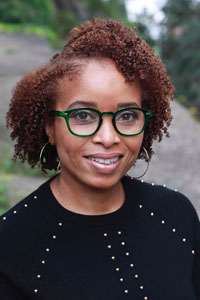
March 24, 2021 at 6:00pm
Series: Pre-Columbian Society of New York
Speaker: Vera Tiesler, Universidad Autónoma de Yucatán, Mérida
Title: Heads, Skulls, and Sacred Scaffolds: New Insights on Late Maya Ritual Practices at Chichén Itzá (and Beyond)
March 25, 2021 at 12:30pm
Series: Ancient Art and Architecture
Speaker: Rubina Raja, Professor of Classical Archaeology at Aarhus University, Denmark and director of the Danish National Research Foundation’s centre of excellence Centre for Urban Network Evolutions
Title: "The most beautiful female portrait I have ever seen"
Palmyrene Funerary Portraiture and Its Significance for the Study of Ancient Portrait Representations
Description: In the 1920s and ‘30s the Danish archaeologist Harald Ingholt undertook archaeological work in Palmyra and investigated more than 100 graves. Ingholt’s interest in Palmyra was originally spurred by his knowledge of the collection of Palmyrene funerary portraits in the Ny Carlsberg Glyptotek in Copenhagen, an institution where he also worked for five years as a curator. In 1928, he published his higher doctoral dissertation Studier over Palmyrensk Skulptur, where he presented a typological and chronological study of more than 500 funerary portraits. This work – published in Danish – has remained a standard work since then. Taking its point of departure in Ingholt’s work and the Ny Carlsberg Glyptotek’s collection, the Palmyra Portrait Project team has since 2012 been collecting all known funerary portraiture from the city in order to create a comprehensive corpus. The corpus holds more than 4,000 portraits at present, making it the largest group of funerary portraits from the Roman world stemming from one place. This lecture takes the corpus as its point of departure and focusses on giving an insight into this unique material and its significance for our understanding of trends and traditions in local portrait representations in Roman Palmyra. Furthermore, the lecture draws in new research done on Ingholt’s excavation diaries and connects this to objects in the corpus, showing the importance of considering archival material and fieldwork notes when reevaluating earlier studies.
Rubina Raja is a Professor of Classical Archaeology at Aarhus University, Denmark and director of the Danish National Research Foundation’s centre of excellence Centre for Urban Network Evolutions. She heads the Palmyra Portrait Project, Archive Archaeology and Circular Economy and Urban Sustainability projects – all collective research projects focusing on the archaeology, history and cultural heritage of Palmyra in Syria. She directs fieldwork projects in Rome and the Middle East. Raja’s research focusses on societal and urban developments and networks from the Hellenistic to the medieval periods, iconography, religion and religious life in Antiquity. While being a classical archaeologist, she also works in the fields intersecting archaeology and natural sciences bringing high definition studies of the past to the forefront. Her most recent books include a translation and edited version of Ingholt’s Studier over Palmyrensk Skulptur from 1928 (Brepols, 2021) and the new collection catalogue of the Palmyra collection in the Ny Carlsberg Glyptotek in Copenhagen (Ny Carlsberg Glyptotek, 2019).
March 26, 2021 at 6:00pm
Series: China Project Workshop
Speakers: Wenpeng Xu (Ph.D. candidate, Department of Anthropology, University of Illinois Chicago) and moderated by Hsueh-Man Shen (The Institute of Fine Arts, NYU).
Title: Export-oriented Porcelain Economy in Song-Yuan China: Production Strategies, Networks, and Interaction at Dehua
March 29, 2021 at 12:00pm
Series: The New York Aegean Bronze Age Colloquium
Speakers: Thomas Brogan, Chrysa Sofianou, Melissa Eaby and Yiannis Papadatos
Topic: “Sopata, Mesorachi, and Papadiokampos: A View of the Cretan Bronze Age from the Periphery”
March 30, 2021 at 4:00pm
Celebrating a New Book by Jean-Louis Cohen
Frank Gehry, a Catalogue Raisonné of the Drawings
Description: Pritzker Prize–winner Frank Gehry is widely considered one of the world’s most important living architects. Much of the genius of Gehry can be found in his drawings, works of art in their own right, whose progressions from paper architecture to built poststructuralist reality have changed our own visual landscape forever.
Written by architecture scholar Jean-Louis Cohen in direct collaboration with the architect, this comprehensive multivolume publication will contain exhaustive documentation of each of Gehry’s projects. Each volume of the catalogue will include insightful texts and high-quality images of individual works and preparatory drawings, along with provenance information, exhibition history, and bibliographic information.
Trained as an architect and a historian, Jean-Louis Cohen holds since 1994 the Sheldon H. Solow Chair for the History of Architecture at New York University's Institute of Fine Arts. He has published more than thirty books, including: Building a New New World: Amerikanizm in Russian Architecture (2020), Frank Gehry; Catalogue Raisonné of the Drawings ; Volume One, 1954-1978 (2020), Le Corbusier : The Built Work (2018), France, Modern Architectures in History (2015), Le Corbusier: an Atlas of Modern Landscapes (2013), The Future of Architecture. Since 1889 (2012), Architecture in Uniform (2011), and Le Corbusier and the Mystique of the USSR (1992).
Among the exhibitions he has curated are the centennial show "L'aventure Le Corbusier," at the Centre Pompidou (1987); "Architecture in Uniform," and "Building a New New World: Amerikanizm in Russian Architecture," at the Canadian Centre for Architecture (2011 and 2019); "Le Corbusier: an Atlas of Modern Landscapes," at the Museum of Modern Art (2007). He received in 2014 the special mention of the jury for his French pavilion at the Venice Biennale.
April 7, 2021 at 6:30pm
Series: The Roberta and Richard Huber Colloquium
Speaker: David Pullins
Title: "Juan de Pareja, seeing beyond Velázquez"
with David Pullins, The Metropolitan Museum of Art
Description: The Afro-Hispanic painter Juan de Pareja's life and artistic personality have been overwhelmingly read through the lens of Diego Velázquez, in whose household Pareja was enslaved for over two decades and who portrayed Pareja in the well-known portrait in The Metropolitan Museum of Art. In the nineteenth century, however, before the public accessibility of Velázquez's portrait and while Spanish art was still being written into the canon, writers and collectors treated Pareja as an independent figure with a depth and nuance that has been lost. This lecture aims to recenter Pareja by contextualizing what is known of his life and enslaved labor in seventeenth-century Spain while also attending to what we can glean from Pareja's own paintings executed following his manumission in 1654. Rather than read Pareja's artistic legacy as the product of years spent in Velázquez's studio, his paintings will be interpreted as the result of an extended Grand Tour education and the artist's response to his Madrid School contemporaries. Because some of the most conventional art historical tools – questions of stylistic development, influence, attribution and patronage – have been almost entirely ignored in Pareja's case, beginning to articulate his artistic agency using his canvases as primary evidence helps us to shift his position from remarkable subject to remarkable producer of works of art.
David Pullins, Associate Curator, Department of European Paintings, The Metropolitan Museum of Art, is responsible for seventeenth- and eighteenth-century French, Italian and Spanish painting at The Metropolitan Museum of Art. He received his MA from the Courtauld Institute of Art and his PhD from Harvard University with a dissertation that addressed workshop practices in eighteenth-century France. He has published widely on seventeenth- through nineteenth-century paintings, drawings, and prints.
The Colloquium is the product of the generosity and continuing support of Roberta and Richard Huber, and we thank them heartily for making the current year’s activities possible.
April 12, 2021 at 6:00pm
Series: Pre-Columbian Society of New York
Speaker: Andrew Finegold, University of Illinois at Chicago
Title: Metonymy in Mesoamerican Art
Description: In ancient Mesoamerica, images often directly responded to the forms, materials, or functions of their supports, or otherwise implicated their physical and social situatedness. In pointing to their contexts, such images can be understood as indexical according to the system of signs developed by Charles Sanders Peirce, but the close relationship between an image and its material conditions can also be classified as metonymical. Metonymy refers to expressions of contiguity or association; it is an additive form of expression, arising from adjacency in the same way that meaning is created grammatically through the combination of sequential terms in a phrase. In the elaboration of existing grounds with imagery deemed appropriate to them—and especially in the construction of teixiptlameh as embodiments of numinous forces—Mesoamerican artists regularly pursued an additive, associative practice of image making. This talk will argue that metonymy was more than a particularly favored representational trope in Mesoamerica, and that its consistent deployment can be directly linked to the ontology of images within an indigenous worldview.
April 13, 2021 at 6:00pm
Series: Judith Praska Distinguished Visiting Professor in Conservation and Technical Studies Lecture
Speaker: Lynda Zycherman
Title: Fraternal Sextuplets: Technical Examination of Picasso's Glass(es) of Absinthe
Description: Picasso’s Glass of Absinthe (1914) is a series of six uniquely painted bronze sculptures. This presentation compares the different versions to discover similarities and differences in the edition. Close visual and instrumental examination revealed information about Picasso’s sculpting method, collage techniques, technical information about the bronze casting, and damages and restorations. The six castings have a consistent and unique metal composition when compared to published alloy analyses of the foundries active in Paris at the time.
We have confirmed Picasso’s use of found materials in conjunction with artist-made materials, revealed the hitherto hidden assembly technique of the three elements of the composition, and identified the paint medium and some of the pigments. These findings will be germane to scholars invested in the Glass of Absinthe series as well as those studying Picasso’s use of polychrome technique.
Lynda Zycherman has served as Conservator of Sculpture at the Museum of Modern Art since 1984. Previously, she was an Associate Conservator at the Freer Technical Laboratory, Smithsonian Institution and worked in the laboratories of the Metropolitan Museum and the Corning Museum of Glass. She received a Bachelor of Arts degree in art history from City College of the City of New York, CUNY, and her M.A. in Art History together with the Certificate in Art Conservation from the Conservation Center of the Institute of Fine Arts.
Over the past 36 years at MoMA, Lynda has researched a wide variety of topics including Minimalist sculpture, sculpture utilizing electric lights, Fluxus, and Pop sculpture. Her current interest is the technical examination of sculpture by Picasso, Matisse and Brancusi.
April 16, 23, 30 and May 7, 2021 at 3:00pm
Series: The IFA / Frick Collection Symposium on the History of Art
The Symposium will be held via Zoom, with live captioning during each session.
April 16, 2021 at 6:00pm
Series: China Project Workshop
Speakers: Phillip Bloom (Huntington Library), moderated by Julia Orell (University of British Columbia)
Title:The Pleasures of Gardens in Song (960–1279) China
Thursday, April 20, 2021 at 12:00pm
Series: The New York Aegean Bronze Age Colloquium
Speaker: Brendan Burke
Topic: “Mycenaean Eleon in Eastern Boeotia: from the Shaft Grave Era through the Post-Palatial Period"
April 21, 2021 at 3:00pm
Series: Time-Based Media Lecture
Speaker: Hélia Marçal, Lecturer in History of Art, Materials and Technology at University College London
Title: Conservation Between Performance and Participation
Description: Conservation has long been recognized as a social activity, aimed at preserving objects and artworks as manifestations of values, affects, and stories. But how can conservators reconcile the values of past, present, and future generations, of local communities and global organisations, of the art institution and the public sphere? This presentation will look at conservation through the lens of performativity to address issues of representation, the politics of participation, and the social landscape in conservation. By exploring the challenges posed to conservation by performance and other forms of socially-engaged art, this lecture will reflect on how these types of artworks reframe conservation aims in the public sphere. Issues of representation and misrecognition in decision-making processes will be analysed through feminist epistemology – namely through Nancy Fraser's work. The presentation will then address the ways in which rethinking conservation through performance allows us to acknowledge the realms of difference and inclusion in our profession. Finally, the lecture will question and reflect on some of the ways in which we can bring new perspectives of compassionate care for artworks, objects, and people to the center of conservation practice.
Dr. Hélia Marçal is a lecturer, researcher, and conservator based in London. She was appointed Lecturer (Assistant Professor) in Art, Materials, and Technology at University College London's Department of History of Art in 2020. Prior to this appointment, she worked as a Fellow in Contemporary Art Conservation and Research of the Andrew W. Mellon funded research project "Reshaping the Collectible: When Artworks Live in the Museum at Tate and a Science Manager at the Institute of Contemporary History (Universidade Nova de Lisboa). She has been the Coordinator of the Working Group on Theory, History, and Ethics of Conservation of the International Council of Museums' Committee for Conservation since 2016.
This lecture series is generously funded by The Andrew W. Mellon Foundation.
April 21, 2021 at 6:00pm
Series: Samuel H. Kress Lecture
Speaker: Sue Ann Chui
Title: New narratives for Old Masters: reflections on works by Gerard David and Ercole de’ Roberti
Description: Beyond the pictorial narrative that a painter presents, the artist and the work of art share another story through the materiality of the object. A conservator’s work, in collaboration with scientists and curators, often reveals the choices an artist makes in the matter and the process of artistic production, and the life that the work has had since leaving the studio. Two such studies of panel paintings from the 15th century will be presented: the wings of a triptych by the Flemish artist Gerard David; and a pair of predella panels by the Ferrarese artist Ercole de’ Roberti. Both projects culminated in separate focus exhibitions at the J. Paul Getty Museum that put a spotlight on the materiality of the artworks. The manufacture and treatment of the paintings, the challenges and the opportunities for displaying them alongside the discoveries made possible by conservation research will be shared.
Sue Ann Chui joined the staff of the National Gallery of Art, Washington, DC as Painting Conservator in 2019 specializing in the care of panel paintings. Prior to this, she was Associate Conservator at the J. Paul Getty Museum, Los Angeles where she worked for fourteen years. Sue Ann earned her MA in Art History and Diploma in Conservation from the Institute of Fine Arts, New York University in 1999 after completing her internship at the Hamilton Kerr Institute, a department of the Fitzwilliam Museum at the University of Cambridge. Through her treatments and technical studies of Old Master Paintings, she has contributed to exhibitions, and has published on the materials and techniques of artists that include Andrea del Sarto, Ercole de’ Roberti, and the workshop of Leonardo da Vinci.
This lecture is generously funded by the Samuel H. Kress Foundation.
April 22, 2021 at 6:00pm
Series: Sam Wagstaff Photography Lecture
Title: Inaugural Sam Wagstaff Photography Lecture
with Hank Willis Thomas
The Institute of Fine Arts is pleased to announce that Hank Willis Thomas will give the inaugural Sam Wagstaff Photography Lecture in conversation with New York based artist, Chris Berntsen.
Hank Willis Thomas is a conceptual artist working primarily with themes related to perspective, identity, commodity, media, and popular culture. His work is included in numerous public collections including the Museum of Modern Art in New York, the Solomon R. Guggenheim Museum, and the Whitney Museum of American Art, among others. Thomas is a recipient of the Gordon Parks Foundation Fellowship (2018), Guggenheim Fellowship (2018), the AIMIA | AGO Photography Prize (2017), the Soros Equality Fellowship (2017), and is a former member of the New York City Public Design Commission.
Chris Berntsen is a New York based artist who uses photography to explore themes related to queerness, identity, and intimacy. Chris' work has been exhibited in MoMA PS1, Aperture Foundation, New York, The Ogden Museum of Southern Art, and the Contemporary Arts Center New Orleans. He received his BFA from New York University's Tisch School of Arts and is an MFA candidate at Hunter College, New York. He has worked alongside artist Hank Willis Thomas for the past fourteen years.
About the Sam Wagstaff Photography Lecture
This new lecture series honors the legacy of Samuel J. Wagstaff Jr. (November 4, 1921 – January 14, 1987). Wagstaff attended the Institute of Fine Arts in the 1950s, studying Italian Renaissance Art under Richard Offner, and went on to become a notable American art curator, collector, and patron of the arts. Through his influential collecting, teaching, and curatorial work, Wagstaff promoted photography as a fine art medium. His groundbreaking collection was purchased by the J. Paul Getty Museum in 1984, constituting the cornerstone of its newly formed Department of Photographs. Sam Wagstaff’s devotion to the medium contributed to its rising status over the years. We are delighted to celebrate his achievements by naming our annual photography lecture in his honor.
April 27, 2021 6:00pm
The Paul Lott Lecture
Speaker: Max Hollein, Marina Kellen French Director, The Metropolitan Museum of Art
Title: An Evening with Max Hollein
The Institute of Fine Arts invites you to a lecture given by Max Hollein, Marina Kellen French Director of The Metropolitan Museum of Art. In this talk, Max Hollein will address The Met's development as an institution, its history, and the contemporary moment of museums.
Appointed Director of The Metropolitan Museum of Art in April 2018, Max Hollein is responsible for guiding the Museum's artistic vision and all of its programming, research, and collection initiatives. An accomplished director for 20 years, Hollein oversees The Met's curatorial, conservation, and scientific departments; exhibition and acquisition activities; education and public outreach; as well as the libraries, digital projects, publications, imaging, and design.
Prior to joining The Met, he was the Director and CEO of the Fine Arts Museums of San Francisco, where his tenure was characterized by visionary programming, pioneering acquisitions, and rigorous fiscal management. Previously he simultaneously led the Schirn Kunsthalle, the Städel Museum, and the Liebieghaus in Frankfurt, Germany, as Director and CEO, all of which experienced significant growth and increased attendance during his tenure.
Born in Vienna, Hollein studied at the University of Vienna (Master of Art History) and the Vienna University of Economics (Master of Business Administration). He began his career at New York's Guggenheim Museum as Chief of Staff to the Director and six years later assumed his leadership role in Frankfurt. Hollein has published and lectured widely and has organized a number of major exhibitions in modern and contemporary art. He is a member of supervisory and advisory boards of major cultural institutions worldwide, including the State Hermitage Museum, St. Petersburg; National Gallery, Prague; and Neue Galerie, New York. Named a Chevalier of the Ordre des Arts et des Lettres by the French Minister of Culture in 2009 and a recipient of the Austrian Cross of Honor for Science and the Arts, he received the Goethe badge of honor (the Hessian Ministry of Culture's highest accolade) in 2016, among other international awards.
This program is made possible with generous funding from the Paul Lott Lectureship.
April 28, 2021 6:00pm
Les choses américaines: American Objects
Speaker: Edward J. Sullivan
Description: Professor Edward Sullivan will present an English-language version of a recent (Zoom) lecture for The Paris Institute for Political Studies (Sciences Po) as part of a seminar organized by Professor Laurence Bertrand Dorléac and entitled “Les choses” (“Things”). Professor Dorléac is currently preparing an exhibition for the Louvre on this topic, envisioned as a meditation on still life and objects that extends beyond the classic definition of the “nature morte.” The lecture is called “American Things” as it concentrates, in the form of several specific modules (or “galleries” in an imaginary exhibition), on a variety of manifestations of interest in both inert commodities and what we could call “sentient objects.” Each of them is viewed through the lens of their socio-political circumstances and the intra-history of themes such as colonialism and oppression, endemic to nations throughout the Western Hemisphere.
Edward J. Sullivan is Deputy Director of the Institute of Fine Arts where he is the Helen Gould Shepard Professor in the History of Art. His fields of research, teaching and curating concern the Americas, especially the Spanish and Portuguese and French-speaking countries of North and South American and the Caribbean as well as Latinx art. He is the author of more than thirty monographs on art and visual cultures from the Iberian Peninsula to the Americas and beyond, to the Philippines in the Spanish colonial era.
April 29, 2021 at 12:00pm
Series: Ancient Art and Architecture
Speaker: Maurizio Harari, Professor of Etruscan and Italic Archaeology and Director of the Archaeological Museum at the University of Pavia, Italy
Title: Imagining the Etruscans: Modern European Perceptions of an Ancient Italian Civilization
Please join us for the keynote talk of the New York Workshop of Etruscan Art given by Maurizio Harari.
The New York Workshop of Etruscan Art is an initiative promoted jointly by Columbia University and New York University. The ambition of the workshop is to advance our understanding of the artistic and visual dimensions of pre-Roman Italy by promoting discussion and sustained reflection on their role within the field of Etruscan studies, but it does not prescribe a specific intellectual agenda. This year, the workshop will: advance discussion of buildings, their roofs and decoration and the avenues they provide to investigate production processes, networks of interaction and creation, the sacred image and the porousness of Italic arts; reflect on the impact of 3D-modeling and reconstructions on our understanding of Etruscan aesthetics; present new findings from the Corpus Speculorum Etruscorum; present unpublished bronze figurines of subordinate characters; explore the relation with comedy of the imagery of Praenestine cistae. The keynote talk will investigate the ideological history of the discipline of Etruscology vis-à-vis modern European perceptions of the past. The full program and details are available online.
Since the late rise of Humanism and through a real crescendo in the 18th to 20th centuries, the Etruscans, an ancient people of pre-Roman Italy, became (and remain) a subject of lively discussions among scholars, as they saw a wide popularity in pseudo-scientific exploration and publication. This lecture aims to explore the ideological features of the foundation process of a highly specialized, but often self-referential discipline, so-called "Etruscology,” which only saw its real scholarly development in the first half of the 20th century. In that context, this major branch of scholarship was created with its roots in the rather complicated connections between the Italian territorial situation of Etruscan civilization and the European dimension of its reception and popularization.
Maurizio Harari is Professor of Etruscan and Italic Archaeology and Director of the Archaeological Museum at the University of Pavia, Italy. Author of over 200 publications, his reach focuses on Etruscan and Italic art and archaeology, especially issues of image making and meaning, wall painting, Etruscans of the Po-River region, and the sacred and political institutions of Etruscan cities. Co-Director of excavations at the Italian site of Verucchio since 2011, he is also a specialist in the historiography of Etruscology and its situation within the archaeological disciplines of Europe and the Mediterranean. He has collaborated widely across Europe, including with the European Research Council and on publication of the Enciclopedia dell’arte antica classica e orientale and the Lexicon Iconographicum Mythologiae Classicae, and he is fellow and member of multiple institutions, including the Istituto Nazionale di Studi Etruschi ed Italici.
May 26, 2021 at 3:00pm
Series: Time-Based Media Lecture
Speakers: J. Soto, Arts Administrator and Consultant, and Sally Szwed, Director of Artist Initiatives from Eyebeam
Title: Shifting online: Responsive transformations in art and technology
Join Sally Szwed and J. Soto from Eyebeam, an organization focused on supporting justice-driven artists working with technology, for a presentation and discussion on how the organization radically pivoted their support for artists, as well as public engagement strategies in both shape and scale at the onset of the Covid-19 crisis. Brought about by the conditions of 2020, these shifts provoke larger questions of the role of artists in the rapidly changing digital environment, sustainability, accessibility of digital spaces, and the possibilities when artists reclaim this type of technology in their work.
In this lecture the two will share some specific examples of inventive artist work that was produced in this formative moment, as well as strategies Eyebeam is undertaking to continue meaningful engagement with artists and the public as we continue to build community in the digital realm.
J. Soto is an arts administrator and consultant invested in the intersectional community histories and present of queer people of color and disabled people. Soto's work focuses on how to create more equitable practices and access to resources in the arts and dance field. His work and writing can be found in Original Plumbing, Apogee Journal: Queer History, Queer Now Folio, American Realness 2018 Reading series, and Jacob’s Pillow Dance Interactive, and Grant Makers in the Arts GIA Reader. His work is deeply influenced by his experiences as a queer transgender Latino who grew up in the Bay Area, with roots in Southern Arizona and the borderlands. He serves as the Manager of Programs and Inclusion at Eyebeam.
As Eyebeam’s Director of Artist Initiatives, Sally Szwed guides the organization's core artist support programs, youth education, and public engagement. Sally believes that artists are vital enactors of societal change, and are essential for inventing a radically equitable future. Sally is an accomplished arts leader in NYC. She previously directed the Creative Time Summit, an international convening on the intersection of art and politics. Sally grew the Summit in both scale and ambition, building an expansive global community while traveling iterations of the program to the 56th Venice Biennale and around the world. She holds an MA in Curatorial Practice from California College of the Arts.
June 3, 2021 at 6:00pm
Series: Great Hall Exhibition Public Program
Speakers: Cauleen Smith, artist, and Mabel O. Wilson, a Professor Architecture and Professor in African American and African Diaspora Studies at Columbia University, and the Director of the Institute for Research in African American Studies (IRAAS) at Columbia University.
Title: A Conversation between Cauleen Smith and Mabel O. Wilson
Description: Presented in conjunction with the current Great Hall Exhibition, Cauleen Smith, H-E-L-L-O: To Do All At Once, artist Cauleen Smith will engage in a conversation with Mabel O. Wilson, the Nancy and George Rupp Professor of Architecture, Planning and Preservation, a Professor in African American and African Diasporic Studies, and the Director of the Institute for Research in African American Studies (IRAAS) at Columbia University. Smith’s short film, H-E-L-L-O, centers New Orleans’s cityscape and history of jazz performance through the lens of experimental film and science fiction in order to critique the racialized logics of the built environment and offer a possible salve through alternate modes of communication, creative practice, and placemaking. Wilson’s extensive scholarship on the racial dynamics embedded within architectural history and insistence on art’s ability to reflect incisive connections between race and architecture provides another inroad into contextualizing Smith’s long-standing examination of space both through film and her expansive multi-media practice. This conversation seeks to reaffirm these “spaceways”––Smith’s neologism for the physical environments that structure the navigation of the Black body through public spaces and historical memory.
Cauleen Smith (b. 1967, Riverside, CA) lives and works in Los Angeles. She was recently the recipient of a solo presentation at the Whitney Museum of American Art, Cauleen Smith: Mutualities (February 17, 2020 — January 31, 2021), as well as a major career survey organized by MASS MoCA, Cauleen Smith: We Already Have What We Need (May 25, 2019 — March 15, 2020). She has also had solo exhibitions at Art Institute of Chicago; Museum of Contemporary Art, Chicago; The High Line, New York; and Contemporary Arts Museum Houston. Her work is currently on view in a two-person exhibition with Theaster Gates at the San Francisco Museum of Modern Art. Her films, objects, and installations have been featured in group exhibitions including the 2017 Whitney Biennial and Prospect.4, New Orleans (2017). She has participated in group exhibitions at The Studio Museum in Harlem, New York; New Museum, New York; San Diego Museum of Art; and BALTIC Centre for Contemporary Art, Gateshead, UK. Smith is the recipient of numerous grants and awards including the 2020 Joyce Alexander Wein Artist Prize from The Studio Museum in Harlem, the inaugural Ellsworth Kelly Award from the Foundation for Contemporary Art in 2016, as well as the 2016 Herb Alpert Award in the Arts for Film/Video, Rockefeller Media Arts Award, Creative Capital Film/Video, Chicago 3Arts Grant, the Foundation for Contemporary Arts, Artadia, and a Rauschenberg Residency in 2015. Most recently, in 2019, Smith was an artist-in-residence at Artpace. Smith was born in Riverside, CA and grew up in Sacramento. She earned a B.A. in Cinema from San Francisco State University in 1991 and an M.F.A. from the University of California, Los Angeles in 1998. Smith studied with Trinh T. Minh-ha, Angela Davis, and Lynn Hershman Leeson at San Francisco State University. She attended the Skowhegan School of Painting & Sculpture in 2007. Smith is Professor at CalArts School of Art.
Mabel O. Wilson is a Professor of Architecture as well as a Professor in African American and African Diaspora Studies at Columbia University. She also serves as the Director of the Institute for Research in African American Studies and co-director of Global Africa Lab. She has authored Begin with the Past: Building the National Museum of African American History and Culture (2017), Negro Building: African Americans in the World of Fairs and Museums (2012/21) and the volume Race and Modern Architecture: From the Enlightenment to Today (2020) with Irene Cheng and Charles Davis. With her practice Studio&, she is member of the architectural team that recently completed the Memorial to Enslaved African American Laborers at the University of Virginia. She is co-curator of the exhibition Reconstructions: Architecture and Blackness in America (2021) currently on view at MoMA. She is a founding member of Who Builds Your Architecture? (WBYA?)—an advocacy project to educate the architectural profession about the problems of globalization and labor.
This exhibition was made possible through the generous support of Valeria Napoleone XX. We extend special thanks to the artist for lending the work on view, and additional thanks to her gallery, Corbett vs. Dempsey. Megan Kincaid and Summer Sloane-Britt curated the exhibition. Lizette Ayala designed the website. Miquael Williams contributed to the exhibition as an advisory curator, and Dr. Edward J. Sullivan provided faculty support.
June 16, 2021 11:00am - 1:00pm
Series: Time-Based Media Lecture
Title: Experiential Conservation: The Media Preservation Initiative Model at the Whitney
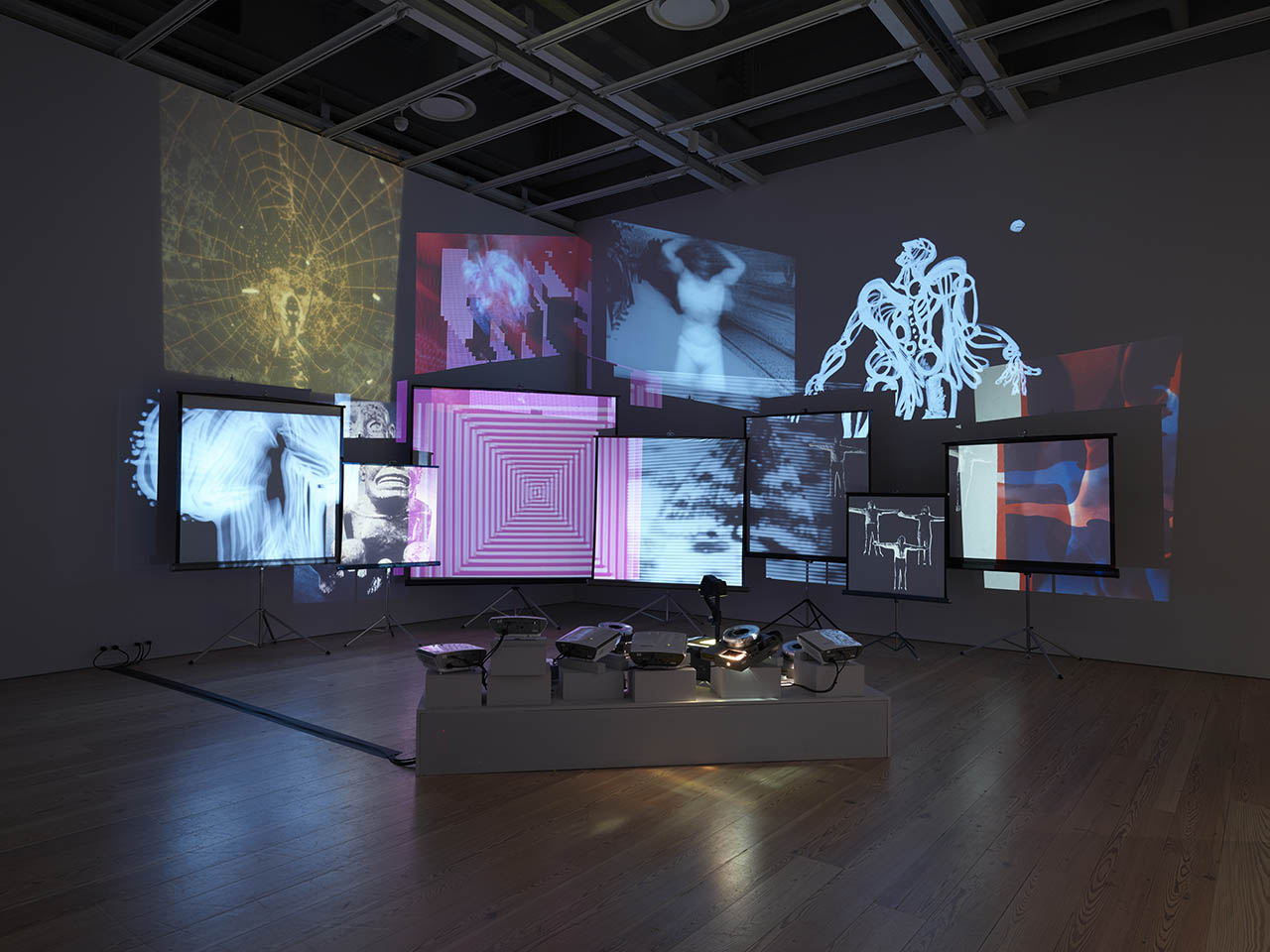
Launched in 2018 to address the needs of one of the largest time-based media art collections in the world, the Whitney’s Media Preservation Initiative (MPI) has reshaped the Museum’s understanding of its own collection and highlighted the need for a more comprehensive stewardship of time-based media (TBM) art. A holistic approach has been developed through sustained dialogue across several departments with the MPI team, whose inter-disciplinary specialists have re-catalogued, researched, and carried out preservation measures at the component level on 600 TBM artworks in just three years. In addition, through MPI the Whitney has pioneered a new system for preservation that equally foregrounds material, digital, and artistic integrity, scholarly research, and access. In this talk, Whitney staff will discuss their vision for the Museum’s TBM collection, while the MPI team recounts some of their greatest challenges and collaborative successes.
Hosted by the Time-based Media Art Conservation program at the Conservation Center, Institute of Fine Arts, NYU. Generously supported by the Andrew W. Mellon Foundation.
WMAA and MPI bios for webinar
Carol Mancusi-Ungaro serves as the Melva Bucksbaum Associate Director for Conservation and Research at the Whitney Museum of American Art and for over a decade as Founding Director of the Center for the Technical Study of Modern Art at the Harvard Art Museums. For nineteen years she served as Chief Conservator of The Menil Collection in Houston, Texas. During that time she founded the Artists Documentation Program wherein she interviews artists about the technical nature of their art (adp.menil.org).
Dr. Chrissie Iles is the Anne and Joel Ehrenkranz Curator at the Whitney Museum of American Art. Her curatorial focus is moving image art, the work of emerging artists, and art of the 1960s and 1970s. She builds the Whitney’s collection of film and video, and is part of the curatorial team that shapes the Museum’s artistic program. She is a member of the Graduate Committee of the Center of Curatorial Studies at Bard College, a Faculty member of the curatorial program at the School of Visual Arts, and a visiting critic in the Fine Art Department of Columbia University.
Farris Wahbeh, Director of Research Resources, works within the field of cultural informatics to enhance access to art and archival collections. He oversees the Frances Mulhall Achilles Library and maintains the Museum’s Special Collections and the Permanent Collection Documentation Office. Farris has gained experience from a wide range of institutions, including Columbia University’s Rare Book & Manuscript Library, the Getty Research Institute, the Provenance Index, the Creative Audio Archive in Chicago, Intuit: the Center for Intuitive and Outsider Art, as well as the King Abdullah University of Science and Technology (KAUST) and Saudi Aramco’s King Abdulazziz Center for World Culture
David Neary is the Project Manager of the Media Preservation Initiative. He is a graduate of NYU’s Moving Image Archiving and Preservation program and also holds an MA in Film Studies from University College Dublin. He has worked to preserve the film collections of institutions including Lincoln Center for the Performing Arts, MoMA, and the Oregon Historical Society.
Savannah Campbell is Media Preservation Specialist, Video and Digital Media at the Whitney Museum of American Art. She has previously been a Fellow in Magnetic Media Preservation at The Standby Program and has worked on audiovisual preservation projects for the Dance Heritage Coalition, CUNY TV, and Crawford Media Services. Savannah holds an MA in Moving Image Archiving and Preservation from New York University.
Brian Block has coordinated the Whitney’s effort to enhance its time-based media documentation practices in his role as Project Researcher. He created new templates for centralizing and analyzing TBM artworks and uses these tools when generating research data about the Museum’s TBM holdings. Brian is a 2018 graduate of UCLA, where he received a Master of Library & Information Science degree with a specialization in Media Archival Studies.
Christopher Bernu is the Project Cataloguer for MPI. He is a graduate of the University of Illinois at Chicago’s Museum and Exhibition Studies program. His previous experience includes projects for the Museum of Modern Art, the Art Institute of Chicago, the Museum of Contemporary Art Chicago, and the DuSable Museum of African American History.
Nicholas Carbone is the Media Preservation Specialist in film and slide works for the Media Preservation Initiative. In addition to his work there, he is also the Audiovisual Archivist for both the Trisha Brown Dance Company and the video artist Mary Lucier. In the past, Nicholas has worked on projects at the Carolee Schneemann Foundation, the Andy Warhol Film Project, Bard College and Artists Space.
Image caption: Stan VanDerBeek (1927-1984), Movie Mural, 1965-68. Multiple 35 and 16mm films, black-and-white and color, sound and silent, durations vary, transferred to video, with black-and-white and color slide projections. Whitney Museum of American Art, New York; purchase with funds from the Film and Video Committee. Photograph by Ron Amstutz. © Estate of Stan VanDerBeek
September 13, 2021, at 6:00pm
Series: Pre-Columbian Society of New York
Speaker: Jesper Nielsen, Associate Professor and Head of Studies, Department of Cross Cultural and Regional Studies, University of Copenhagen
Title: Connecting the Dots: Tracing Teotihuacan's Imperial Presence in Early Classic Mesoamerica
In this talk, Dr. Nielsen will discuss current knowledge of what may have been the largest empire in Pre-Columbian Mesoamerican history – controlled from the sprawling capital of Teotihuacan in the central Mexican highlands. For the past 20 years, this has formed one of Dr. Nielsen's own research topics, beginning with an examination of the spread of Teotihuacan iconography into the Maya area in the late 4th century. In the past decade Dr. Nielsen has been involved in work on Teotihuacan-style iconography in other parts of Mesoamerica, in particular the present-day states of Queretaro, Michoacan and Guerrero, and what has become increasingly clear is that Teotihuacan presence has left us with traces of an imperial iconography with a standardized repertoire of motifs related to warfare and conquest. The contours of a more complete image of a vast empire thus begin to emerge. At the same time, new findings at Teotihuacan itself adds to our understanding of how the metropolis attracted people from several of the provinces, revealing a highly complex interaction sphere between the centralized imperial power and some of its most distant enclaves.
September 20, 2021, at 6:00pm
Title: Crafting Enlightenment: Celebrating a New Book Edited by Lauren Cannady and Jennifer Ferng
Speakers: Lauren Cannady, Assistant Clinical Professor at the University of Maryland, College Park; Jennifer Ferng, Senior Lecturer in Architecture at the University of Sydney; Laura Auricchio, Dean of Fordham College at Lincoln Center and Professor of Art History at Fordham University; and Thomas Crow, Rosalie Solow Professor of Modern Art at the Institute of Fine Arts
Description: Please join the Institute in conversation with alumna Lauren Cannady, Assistant Clinical Professor at the University of Maryland, College Park, Jennifer Ferng, Senior Lecturer in Architecture at the University of Sydney, and Laura Auricchio, Dean of Fordham College at Lincoln Center and Professor of Art History at Fordham University, on Crafting Enlightenment: Artisanal Histories and Transnational Networks, a new book edited by Cannady and Ferng that was recently published in the Oxford University Studies in the Enlightenment series. Thomas Crow, Rosalie Solow Professor of Modern Art at the Institute of Fine Arts, and contributor of a response essay to Crafting Enlightenment, will introduce the speakers and give brief remarks.
Crafting Enlightenment frames artisans from all corners of the 18th-century world—from Europe, the Ottoman Empire, viceregal Mexico, and colonial America to Mughal India, Qing dynasty China, and colonial Australia—as historical actors who responded to and translated European Enlightenment thinking through their production of architecture, ceramics, furniture and ornamental carving, gardens, clocks, illuminated manuscripts, and metalwork. Contributors to this book revivify the identities of 18th-century artisans and give shape to the networks that artisans formed at local and global levels to assert their diverse expertise and experience. With essays by Lauren Cannady, Dennis Carr, Frédéric Dassas, Jennifer Ferng, Emine Fetvaci, Neil Kamil, Dorothy Ko, Chandra Mukerji, Valérie Nègre, and Sugata Ray and responses by Florina Capistrano-Baker, Kaijun Chen, Thomas Crow, Richard Taws, and Nancy Um.
Lauren Cannady earned her PhD from the Institute of Fine Arts in 2014. Prior to teaching in the multidisciplinary University Honors program at the University of Maryland, College Park, she served as Assistant Director of the Clark Art Institute’s Research and Academic Program and, in 2019-2020, was a research fellow at the Huntington Library. She has published on comparative and visual thinking in the space of an early eighteenth-century curiosity cabinet and is writing a book on early modern garden patterns and taxonomies of knowledge in Northern Europe and colonial America.
Jennifer Ferng is Senior Lecturer in Architecture and Postgraduate Director at the University of Sydney. Her first area of research examines European architecture and the earth sciences during the long eighteenth century; her second area of research focuses on contemporary humanitarian issues related to asylum seekers and refugees in Oceania and Southeast Asia. Her forthcoming publications include a chapter for Making Ideas Visible in the Eighteenth Century (University of Delaware Press) and an edited volume of essays Land Air Sea authored with Lauren Jacobi. Based on a collaboration with the National University of Singapore, her joint book Drawing Climate: Visualising Invisible Elements of Architecture with Birkhäuser will be in print this November.
Laura Auricchio, PhD, is Dean of Fordham College at Lincoln Center and Professor of Art History at Fordham University. A specialist in France and the United States in the Age of Revolution, her most recent book, The Marquis: Lafayette Reconsidered, won the 2015 American Library in Paris Book Award. She is currently serving on the scientific committee of France in the Americas, a “collaborative bilingual digital library.which is the fruit of the cooperation between the National Library of France and 18 French, Canadian, American, and British cultural institutions and universities."
September 22, 2021, at 6:00pm
Series: IFA Contemporary Asia
Speakers: Professor Dipti Khera, Associate Professor of South Asian Art and Architecture at NYU; Dr. Kelly Baum, Cynthia Hazen Polsky and Leon Polsky Curator of Contemporary Art, The Metropolitan Museum of Art; Professor Gayatri Gopinath, Director of the Center for the Study of Gender and Sexuality at NYU; and Dr. Brinda Kumar, Associate Curator, Department of Modern and Contemporary Art, The Metropolitan Museum of Art.
Title: Traversing Multiple Realities of Contemporary American and Asian Art: Shahzia Sikander
In conjunction with the exhibition Shahzia Sikander: Extraordinary Realities, jointly organized by the Morgan Library & Museum (on view through September 26, 2021) and the RISD Museum (November 12, 2021 - January 30, 2022), IFA Contemporary Asia is excited to present a webinar featuring the internationally celebrated Pakistani American artist Shahzia Sikander. Having established pioneering conversations since the 1990s between her contemporary art practice and South, West, and Central Asian manuscript traditions, Sikander exploded their storytelling potential within heterogeneous mediums over the past three decades. Sikander's paintings, video animations, mosaics, and sculptures incisively probe gender roles and sexuality, racial and colonial narratives. Her work playfully critiques Orientalist histories of art and America's global wars, poignantly centering the violence of empires, past and present, and displaying near and distant geographies as inextricably linked.
Professor Dipti Khera, Associate Professor of South Asian Art and Architecture at NYU, will introduce the panel. Three scholars will discuss the ideas and questions provoked by Sikander's wide-ranging artistic practice: Dr. Kelly Baum, Cynthia Hazen Polsky and Leon Polsky Curator of Contemporary Art, The Metropolitan Museum of Art; Professor Gayatri Gopinath, Director of the Center for the Study of Gender and Sexuality at NYU; and Dr. Brinda Kumar, Associate Curator, Department of Modern and Contemporary Art, The Metropolitan Museum of Art.
This discussion seeks to expand the understandings of Sikander's practice in relation to broader narratives about contemporary American and Asian Art; the framing of Asian diasporic artists in curatorial practice and museums; and the history of collecting and colonialism that Sikander has intertwined in interrogating migrations of peoples and objects in the longue durée.
Kelly Baum is Cynthia Hazen Polsky and Leon Polsky Curator of Contemporary Art at The Metropolitan Museum of Art. She has been working as a curator and scholar for over twenty years. She has organized dozens of exhibitions, among them Carol Bove: setting for A. Pomodoro; Nobody's Property: Art, Space, 2000-2010; Delirious: Art at the Limits of Reason, 1950-1980; The Facade Commission: Wangechi Mutu; and most recently, with Randy Griffey, Alice Neel: People Come First. Her writing has been widely published in books and periodicals, such as October and Art Journal. She received her PhD from the University of Delaware in 2005, and was a 2018 fellow in the Center for Curatorial Leadership.
Gayatri Gopinath is Professor in the Department of Social and Cultural Analysis, and the Director of the Center for the Study of Gender and Sexuality at New York University. She works at the intersection of transnational feminist and queer studies, postcolonial studies, and diaspora studies, and is the author of two monographs: Impossible Desires: Queer Diasporas and South Asian Public Cultures (Duke University Press, 2005), and Unruly Visions: The Aesthetic Practices of Queer Diaspora (Duke University Press, 2018). She has published numerous essays on gender, sexuality, and queer diasporic visual art and culture in anthologies and journals such as Journal of Middle East Women’s Studies, GLQ, and Social Text, as well as in art publications such as PIX: A Journal of Contemporary Indian Photography, Tribe: Photography and New Media from the Arab World, and ArtReview Asia.
Brinda Kumar is an Associate Curator in the department of Modern and Contemporary Art at The Metropolitan Museum of Art, New York, where she has worked on several exhibitions including Nasreen Mohamedi (2016), Unfinished: Thoughts Left Visible (2016), Like Life: Sculpture, Color, and the Body, 1300-Now (2018), Home Is a Foreign Place: Recent Acquisitions in Context (2019), and Gerhard Richter: Painting After All (2020). Brinda completed her BFA at the College of Art, New Delhi, and her MA at the School of Arts and Aesthetics, Jawaharlal Nehru University, New Delhi. Her PhD dissertation at Cornell University focused on the history of collecting Indian art in America in the twentieth century, and she conducted research through fellowships from Cornell University, the Smithsonian Institution, and the Frick Collection. She is the author of several essays for museum catalogues, and has published articles from her doctoral research on Okakura Kakuzo and Ananda Coomaraswamy.
Pioneering Pakistani American artist, Shahzia Sikander is widely celebrated for expanding and subverting pre-modern and classical Central and South-Asian manuscript painting traditions and launching the form known today as neo-miniature. By bringing the non-western art-historical visual vernacular into dialogue with contemporary international art practices, Sikander’s multivalent and investigative work examines colonial archives to readdress orientalist narratives in western art history. Interrogating ideas of language, trade, empire, and migration through imperial and feminist perspectives Sikander’s paintings, video animations, mosaics and sculpture explore gender roles and sexuality, cultural identity, racial narratives, and colonial and postcolonial histories. Recipient of the MacArthur genius grant and US Medal of Art, Sikander's work has been exhibited and collected internationally and currently her early works from 1988-2003 are on view at the Morgan Library NY and will travel to RISD Museum in fall 2021 and MFA Houston in spring 2022.
September 24, 2021, at 6:30pm
Series: China Project Workshop
Description: Yan Weitian, Ph.D. Candidate, Department of Art History, University of Kansas will present on Yi Bingshou and the Ye Family: A Case of Artistic Patronage in Qing Guangzhou. The discussion will be moderated by Michael J. Hatch (Miami University).
September 28, 2021, at 6:00pm
Title: Summer Projects Day I: Time-based Media projects
The Institute of Fine Arts invites you to an evening of presentations from current conservation students on their summer 2021 work projects.
Presentations will include:
Sasha Arden
Documentation and treatment projects for the Thoma Foundation collection, including digital artworks and traditional media
James Hughes
Documentation and conservation of a time-based media sculpture titled Color Panel v1.0 (1999) by John F. Simon, Jr. at the Brooklyn Museum
Josephine Jenks
Forming a preservation strategy for three interactive digital stories from The New York Times in the Cooper Hewitt's collection
Felice Robles
Conservation treatment of a Woodburytype at The Better Image
There will be a question and answer session following the presentations.
September 29, 2021, at 6:30pm
Series: The Roberta and Richard Huber Colloquium
Speakers: Marie Tanner, independent scholar and author, and Edward J. Sullivan, Deputy Director of the Institute of Fine Arts and the Helen Gould Shepard Professor in the History of Art
Title: Sublime Truth and the Senses: Titian's Poesie for King Philip II of Spain
Please join the Institute of Fine Arts for a conversation between author Dr. Marie Tanner and Edward J. Sullivan, Deputy Director of the Institute of Fine Arts and the Helen Gould Shepard Professor in the History of Art, as they discuss Dr. Tanner's new book, Sublime Truth and the Senses: Titian’s Poesie for King Philip II of Spain.
Between 1554 and 1562 Titian, the unequaled Venetian Renaissance painter, worked on his series called the Poesie - six paintings of mythological themes with deeply sensual content. They were commissioned by King Philip II of Spain and are now dispersed in museums in Europe and the United States. These works (currently together in an acclaimed exhibition at the Isabella Stewart Gardner Museum, Boston) are key monuments of the Italian Renaissance and also served as inspiration for artists of later generations such as Peter Paul Rubens and Diego Velázquez. In her timely study, Marie Tanner offers a nuanced and often surprising reassessment of one of the great picture cycles of Western art.
Dr. Marie Tanner received a Ph.D. and an M.A. from the Institute of Fine Arts, New York University (1976; 1970). She specialized in Renaissance Art and Architecture, studying with Erwin Panofsky, Richard Krautheimer, Ludwig Heydenreich, Colin Eisler and other distinguished Professors. She took a related minor at Columbia University in Italian Literature and Philosophy, studying with Paul Oskar Kristeller, Maristella de Panizza Lorsch and John Charles Nelson.
She is the author of Sublime Truth and the Senses: Titian’s Poesie for King Philip II of Spain, London and Turnhout: Harvey Miller, 2018; Jerusalem on the hill: Rome and the vision of Saint Peter's Basilica in the Renaissance, London & Turnhout: Harvey Miller, 2010; The Last Descendant of Aeneas: The Hapsburgs and the Mythic Image of the Emperor, New Haven & London: Yale University Press, 1993, “Titian’s Poesie for King Philip II of Spain,” (Ph.D. New York University, 1976). Her articles include “Concordia in Piero della Francesca’s Baptism of Christ;” “Passion Booty in Piero della Francesca’s Flagellation of Christ;” Imperial Themes in Piero della Francesca’s True Cross Cycle;” and articles on Giorgione’s Fête Champêtre; Titian’s Diana and Actaeon, and several articles on St. Peter’s Basilica. Her recent talks include The Bull with the Fiery Eye: Titian’s Europa for Philip II and Statecraft (Renaissance Society of America, Boston 2017); Donatello and Lucretius (Renaissance Society of America, New York; 2014); Pope Nicholas V and Jerusalem Imagery in Mid-Quattrocento Rome (Renaissance Society of America, Venice, 2010); Lucretius and Leon Battista Alberti, (Renaissance Society of America, 2021).
She was awarded the Wittenborn Prize for The Last Descendant of Aeneas (1993) and the Kingsley Porter Prize, for “Chance and Coincidence in Titian’s Diana and Actaeon” (l974).
She received Fellowships from the National Endowment for the Humanities (1993), and the American Council of Learned Societies Fellowship, (l978-79). She was the Paul Mellon Senior Visiting Fellow, Center for Advanced Study in the Visual Arts, National Gallery, Washington, D.C. in 1996.
She was Associate Professor of Art History at Rutgers University in New Brunswick, New Jersey, and at Queens College of the City University of New York. She is currently an independent scholar.
Edward J. Sullivan is Deputy Director of the Institute of Fine Arts where he is the Helen Gould Shepard Professor in the History of Art. His fields of research, teaching and curating concern the Americas, especially the Spanish, Portuguese and French-speaking countries of North and South American and the Caribbean, as well as Latinx art. He is the author of more than thirty monographs on art and visual cultures from the Iberian Peninsula to the Americas and beyond, to the Philippines in the Spanish colonial era.
October 8, 2021, at 6:30pm
Series: China Project Workshop
Description: This China Project Workshop will be a discussion on the Present and Future of Digital Publishing in Chinese Art and Visual Culture with Stephen H. Whiteman, The Courtauld Institute of Art; Ann Waltner, University of Minnesota; and Vivi Xie, The Institute of Fine Arts, NYU. The discussion will be moderated by Michele Matteini (Department of Art History and The Institute of Fine Arts, NYU).
October 12, 2021, at 6:00pm
Series: Pre-Columbian Society of New York
Speaker: Kim Richter, Senior Research Specialist, Getty Research Institute
Title: Gobernantes de piedra: A Reinterpretation of Postclassic Huastec Sculptures
Description: The year 2021 began with surprising archaeological news—a welcome distraction from the doom and gloom of the pandemic: a spectacular Huastec sculpture had been found in the community of Hidalgo Amajac, in the municipality of Álamo Temapache, Veracruz on New Year’s Day. In their field, local farmers unearthed a stone sculpture of a woman with a towering headdress. The find quickly became a news sensation around the world, according to the INAH Veracruz archaeologist, Dr. María Eugenia Maldonado Vite, who was in charge of investigating and reporting the discovery to the INAH authorities in Mexico City. The official INAH Bulletin’s headline described the sculpture as “La primera escultura femenina prehispánica en su tipo es hallada en la Huasteca veracruzana” (The first female Pre-Hispanic sculpture of its kind is found in the Huasteca veracruzana)—a somewhat more sensational title over what Dr. Maldonado Vite had chosen for her factual report. Alejandra Frausto Guerrero, Mexico’s Secretary of Culture, furthermore hailed the sculpture as proof that women actively participated in governance of the Huasteca. This acceptance of interpreting this Huastec female sculpture as a ruler is a significant reversal of how such works have been interpreted until recently: as the goddess Tlazolteotl. It reflects the impact of recent research on the Huasteca. In this lecture, I assess the reception and interpretation of this monument by placing it in the context of the larger corpus of Huastec sculptures and argue that it indeed should be interpreted as representing the Huastec governing elite class.
October 19, 2021, at 6:00pm
Title: Summer Projects Day II: Paper, Book, and Time-based Media Projects
The Institute of Fine Arts invites you to an evening of presentations from current conservation students on their summer 2021 work projects.
Presentations will include:
Erin Fitterer
Documenting four “Soho Eckstein Cycle” films by William Kentridge in the Brooklyn Museum’s collection
Emma Hartman
Conservation treatment of 19th-century printed materials at the American Antiquarian Society
Alexa Machnik
Challenges and Considerations of Mounting a Large-Scale Digital Print at the Saint Louis Art Museum
Shaoyi Qian
The treatment of pop-up and movable books at the University of Michigan Library
Abigail Slawik
Conservation treatment of Hendrick Doncker’s De Zee-atlas from 1660 at the New York Public Library
There will be a brief question and answer session following the presentations.
October 21, 2021 at 12:00pm
Series: Latin American Forum
Speakers: Heloisa Espada, curator at Instituto Moreira Salles, Brazil; Francesca Ferrari, PhD candidate at New York University’s Institute of Fine Arts; and Adele Nelson, assistant professor of art history and associate director of the Center for Latin American Visual Studies at the University of Texas at Austin
Title: Recasting Concretism: New Looks at Max Bill in Latin America
A Panel with Heloisa Espada, Francesca Ferrari, and Adele Nelson
Description: The Swiss artist Max Bill (1908–1994) has long been understood as a principal source for the theory and practice of Latin American abstract artists in the 1940s and 1950s, especially in Brazil and Argentina. This narrative, which pervades the literature on the history of concretism in the region, consistently casts Bill as a staunch defender of rationalism and even as the harbinger of a certain formal rigidity.
This panel challenges these assumptions, recasting Bill’s role in the shaping of Latin American concretism and reassessing his contributions in light of his Brazilian and Argentine peers’ interpretation of concrete art. It disputes the straightforward conflation of Bill’s approach to form with that of his counterparts in the region and reassesses Bill’s interest in mathematical structures in terms of irregular, non-Euclidean notions of space and the viewer’s sensory activation.
After Francesca Ferrari introduces her research for the exhibition “From Surface to Space”: Max Bill and Concrete Sculpture in Buenos Aires, on view at the Institute for Studies on Latin American Art (ISLAA), Heloisa Espada will discuss the contradictions between Bill’s positions and the narratives that describe him as a propagator of strict ideas about concrete art in her lecture “Max Bill: Radical for Whom?” Adele Nelson will then present her talk “Max Bill or Bust: Complicating Brazilian Concretism,” which will reveal how form, as conceived by Brazilian thinkers and makers, stood counter to Bill’s thinking and instead signaled an innovative merging of media.
This program is organized in conjunction with “From Surface to Space”: Max Bill and Concrete Sculpture in Buenos Aires, curated by Francesca Ferrari, at ISLAA, a complementary exhibition to max bill global at the Zentrum Paul Klee. The event will be conducted in English on Zoom, and a recording will be made available after it takes place. For information about the related panel International Dialogues in Experimental Design, presented by the Zentrum Paul Klee and ISLAA on October 14, please visit this link.
ABOUT THE SPEAKERS: Heloisa Espada is curator at Instituto Moreira Salles, Brazil. She specializes in modern and contemporary Brazilian art, with a special focus on its relationship with photography. Espada is author of Hercules Barsotti (2013) and Monumentalidade e sombra: o centro cívico de Brasília por Marcel Gautherot (2016). She has organized the exhibitions Geraldo de Barros e a fotografia (2014) and Conflitos: fotografia e violência política no Brasil, 1889-1964 (2016), among others. Currently, she is fellow in the Latin American Collection Fellowship Program of the Patricia Phelps Cisneros Research Institute for the Study of Art in Latin America of MoMA, where she is conducting research about the Ruptura group.
Francesca Ferrari is a PhD candidate at New York University’s Institute of Fine Arts, where she is a recipient of the Robert Lehman Fellowship for Studies in the Fine Arts. She holds an MA in art history from the University of Pennsylvania and a BA in art history and English from the Université de Lausanne. Her research focuses on twentieth-century European and Latin American art. Her dissertation, tentatively titled “Animated Geometries: Abstraction and the Body in the Work of Paul Klee, Sophie Taeuber, Joaquín Torres-García, and Alexandra Exter,” explores the convergence of geometric abstraction, the human body, and movement on a transnational scale during the 1920s. She has published in several graduate art history journals as well as in Afterimage and the Yale University Art Gallery Bulletin. Ferrari is the 2020/2021 Mellon-Marron Research Consortium Fellow in the Department of Painting and Sculpture at the Museum of Modern Art.
Adele Nelson is assistant professor of art history and associate director of the Center for Latin American Visual Studies at the University of Texas at Austin. She specializes in postwar and contemporary art of Latin America, with a focus on Brazil, and her writings have appeared in Art Journal, Artelogie, ARTMargins, MODOS, and various museum publications. Her new book, Forming Abstraction: Art and Institutions in Postwar Brazil, will appear in January 2022 in the Studies on Latin American Art series from the University of California Press. Her research has been supported by the Fulbright US Scholar Program, the National Endowment for the Humanities, and the American Philosophical Society.
ABOUT THE LATIN AMERICAN FORUM: The Latin American Forum is a platform sustained in partnership with ISLAA that brings artists, scholars, and critics of the arts of the Americas to The Institute of Fine Arts, providing a platform for discussions and debates about diverse issues pertaining to contemporary arts and visual cultures throughout the hemisphere.
Since partnering with ISLAA in 2011, NYU’s Latin American Forum has hosted more than thirty events.
October 22, 2021, at 10:00am
Series: Time-Based Media Lecture
Title: Copyright and Contracts in Contemporary Art
Description: What kind of legal implications arise when collecting contemporary art? This presentation considers the many facets of authorship and ownership, and how they shape processes of acquisition and conservation of contemporary artworks, particularly time-based media works. The legal instruments specific to the care and preservation of these works will be discussed. Overall, the presentation reflects on how we might develop a greater understanding of the unique legal relationship between the artist and the collector, one that expands beyond a simple transaction.
Zoë Miller is an interdisciplinary researcher based in London. She holds a BA, LLB, and MA in Museum Studies from the University of Queensland, Australia, and is a PhD candidate based at Tate and Maastricht University as part of the Marie Skłodowska-Curie Innovative Training Network (ITN) New Approaches in the Conservation of Contemporary Art (NACCA).
October 26, 2021, at 6:30pm
Series: Walter W.S. Cook Lecture
Speaker: Lisa Conte, Head of Conservation, 9/11 Memorial & Museum
Title: Malleable Memories and an Evolving History: Preserving the 9/11 Memorial Museum’s Collection
Description: A distinguishing feature of many objects in the 9/11 Memorial Museum’s collection is that they preserve truths about the lives of the people they intersected with. They also provide an entry point for understanding the grief, discontinuity, and eventual hope that ensued after the 2001 terrorist attacks. Objects vary widely in medium and inherent condition and include evidence of the atrocity, memorial and tribute items, artworks, and historical records, documenting a day that changed the world. Some represent the culmination of a rapid-response collecting initiative that began within days of the event. In New York City, this enterprise preserved examples of the community response and objects recovered from the Ground Zero disaster site. These efforts were made even though there was no way of knowing, at that point, exactly what role these artifacts would play in the remembrance of this history.
Preserving artifacts in the collection is complicated. Often there are no ideal aesthetics to strive for. To the contrary, physical wear, dust, and visible evidence of trauma can add, rather than detract, from an object’s historical and emotional resonance. Determining what aspects of an object are significant, and what, if anything, warrants intervention, requires careful study, as any alteration can directly shape a still evolving history. Engaging with stakeholders outside the museum realm who are fluent with the details of this fateful event and those it claimed or scarred is essential. But even then, the process is imperfect. Memories of traumatic events can be fallible. And our interpretation of things can change.
Highlighting illustrative examples, this talk will consider how the Museum’s preservation strategies attempt to maintain the authenticity and humanity of objects that illustrate a very complex history, from the lives of those killed to the way people came together in inspiring ways as they faced a collective traumatic experience. It will also consider how working with a collection born of an act of contemporary terrorism can affect us as museum professionals.
Lisa Conte is the Head of Conservation at the 9/11 Memorial & Museum. She specializes in the conservation of modern and contemporary works on paper, and has previously held positions at the Metropolitan Museum of Art, Scott Gerson Conservation, and the Whitney Museum of American Art. She received her BA in English and Studio Art from William Smith College and an MA in Art History and an Advanced Certificate in Conservation from the New York University Institute of Fine Arts. Her current research interests include the ethical considerations related to the preservation of spontaneous memorials.
October 28, 2021, at 6:30pm
Series: Ancient Art and Archaeology
Title: Daedalus, Knossos and the Beginnings of Greek Sculpture
Speaker: Antonis Kotsonas, Associate Professor of Mediterranean History and Archaeology, the Institute for the Study of the Ancient World
Description: Ancient tradition associated early Greek sculpture with the legendary master craftsman Daedalus, who was based at Knossos, Crete. This tradition inspired scholars of the early 20th century to believe that the beginnings of Greek monumental sculpture should be sought in Crete. The idea drew support from the then recent discovery of a 7th century BCE temple with rich sculptural decoration at the central Cretan site of Prinias, which is still considered widely as the earliest Greek temple with architectural sculpture. The travels of Daedalus and his pupils were taken to have disseminated the art across the Aegean and the Mediterranean. This interpretative model grew unpopular over time, but current discussions of Greek sculpture still highlight the early evidence from Crete. Both dated and current approaches to early Greek sculpture, however, typically overlook a set of important, yet little-known monuments from Knossos. Bringing together old but previously overlooked finds and new discoveries from the site, my lecture reveals an exceptionally rich tradition of early Greek sculpture. It also investigates the interaction of the Knossian workshop with sculptural traditions from elsewhere in Crete, the Aegean and the Eastern Mediterranean, and revisits the significance of the Knossian and other Cretan evidence for the beginnings of Greek sculpture.
November 3, 2021, at 3:00pm
Series: Time-Based Media Lecture
Title: Video Sculpture in Shigeko Kubota: Liquid Reality at MoMA: Collaboration, Conservation, and Care
Description: The exhibition Shigeko Kubota: Liquid Reality features a selection of groundbreaking video sculptures made between 1976-85, presented together for the first time in thirty years. Positioned by the artist between “reality and mirage,” the conservation and care of these multilayered works pose a compelling set of concerns, activating questions that typically pertain to disparate classifications of art: unique sculptural objects, variable media, and conceptual propositions. In this virtual roundtable, Erica Papernik-Shimizu, Associate Curator, Department of Media and Performance at MoMA will be joined by conservators Amy Brost, Lia Kramer, and Andy Wolf to discuss how the Museum prepared two sculptures from its collection for display and collaboratively developed a plan to care for loaned works during the exhibition, in close consultation with the Shigeko Kubota Video Art Foundation. Jochen Saueracker, the Foundation’s archive director, will speak about the Foundation’s recent conservation initiatives, including the realization of new iterations. Through an examination of the varied strategies explored by the Museum and the Foundation, and how they intersect, overlap, and inform one another, we can gain a deeper understanding of the rigorous and poetic concepts at the heart of Kubota’s artistic practice.
What kind of legal implications arise when collecting contemporary art? This presentation considers the many facets of authorship and ownership, and how they shape processes of acquisition and conservation of contemporary artworks, particularly time-based media works. The legal instruments specific to the care and preservation of these works will be discussed. Overall, the presentation reflects on how we might develop a greater understanding of the unique legal relationship between the artist and the collector, one that expands beyond a simple transaction.
Erica Papernik-Shimizu, Associate Curator, Department of Media and Performance, The Museum of Modern Art Erica Papernik-Shimizu is a founding member of the Department of Media and Performance, where she plays an active role in shaping best practices for the stewardship of the Museum’s time-based media collection. She has organized and contributed to numerous exhibitions, collection presentations, and projects, including the MoMA PS1 presentation of the touring exhibition Carolee Schneemann: Kinetic Painting (organized by Sabine Breitwieser, 2017), Tony Oursler: Imponderable (co-organized with Stuart Comer, 2016), and Images of an Infinite Film (2013-14). She holds an M.A. in History of Art from University College London and a B.A. in History of Art from the University of Michigan-Ann Arbor.
Amy Brost, Assistant Media Conservator, The David Booth Conservation Department, The Museum of Modern Art Amy Brost works with the Media and Performance collection as well as with the Museum's digital repository for art. She earned an M.A. in Art History and an M.S. in Conservation from New York University, a B.S. in Art and a B.A. in Art History from the University of Wisconsin-Madison, and an A.S. in Chemistry from New York City College of Technology. During her conservation training she worked with time-based media collections at the Solomon R. Guggenheim Museum and The Metropolitan Museum of Art in New York. She has been an adjunct instructor in NYU's Moving Image Archiving and Preservation graduate program and has taught in several workshops on the care of media art.
Lia Kramer, Andrew W. Mellon Fellow in Media Conservation, The David Booth Conservation Department, The Museum of Modern Art Lia Kramer holds an M.A. in the History of Art and Archaeology, an M.S. in Conservation of Historic and Artistic Works from the Conservation Center of the Institute of Fine Arts, New York University, and a B.F.A. in Drawing and Painting from Georgia State University. She has previously worked on time-based media conservation projects for institutions including Tate, The Metropolitan Museum of Art, Cooper Hewitt Smithsonian Design Museum, and the Solomon R. Guggenheim Museum. Lia has been an Andrew W. Mellon Fellow in Media Conservation at MoMA since November 2019 and will complete the final year of her fellowship at the Brooklyn Museum.
Andy Wolf, David Booth Fellow in Objects Conservation, The David Booth Conservation Department, The Museum of Modern Art Andy Wolf earned his M.A. in the History of Art and Archaeology and M.S. in the Conservation of Historic and Artistic Works, specializing in objects, from the Conservation Center of the Institute of Fine Arts, New York University, in 2020. He has completed conservation internships at The Metropolitan Museum of Art, the Cooper Hewitt Smithsonian Design Museum, the Cincinnati Art Museum, and the Excavation of the Sanctuary of the Great Gods in Samothrace, Greece.
Jochen Saueracker, Artist, Curator, and Director of Archive, Shigeko Kubota Video Art Foundation Jochen Saueracker studied physics at the Ruhr Universität Bochum and visual arts and sculpture at the Kunstakademie Duesseldorf with Prof. Guenther Uecker. He lives and works in Duesseldorf, Germany. In 1983 he met Shigeko Kubota and Nam June Paik and became a friend and collaborator for the following decades. He was responsible for the realization of many large-scale artworks and was responsible for the planning and the installation of many museum exhibitions and biennial participations around the world. Since the late 1990s he has been consulting for museums and private collections to find solutions for the restoration and conservation of video-based artworks. In 2015 he became a founding member of the Shigeko Kubota Video Art Foundation.
November 4, 2021, at 6:00pm
Title: Celebrating a New Book by Matthew Hayes: The Renaissance Restored
Description: Join Institute alumnus Matthew Hayes in conversation with colleagues Davide Gasparotto, Dorothy Mahon, and Dianne Modestini to present his new book, The Renaissance Restored: Paintings Conservation and the Birth of Modern Art History in Nineteenth-Century Europe.
Michele Marincola will introduce the event. The Renaissance Restoredchronicles paintings restoration in nineteenth-century Europe, exploring connections between conservation practice and art history writing. Its first chapters consider the material histories of works by Giotto and Titian in relation to pioneering texts that defined the earlier golden age, those by Swiss historian Jacob Burckhardt among them. Later chapters recount the integration of paintings conservation into museums: at the National Gallery in London under the direction of Charles Eastlake and in Berlin under Wilhelm Bode. The book proposes an updated model for conservation history that is object focused yet enriched by a wider cultural context. It incorporates period texts, unpublished archival materials, and historical photographs to probe how paintings looked and were changed as scholars composed the foundational texts of art history.
We are delighted to offer a discount for this new publication - please use code: GPRR21 for 20% off at shop.getty.edu. For orders made outside the U.S. and Canada, please use code: G2021 for 20% off at yalebooks.co.uk. Discount expires 31 December 2021.

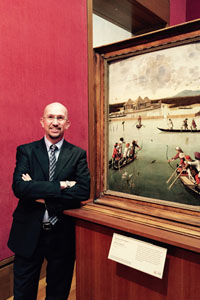
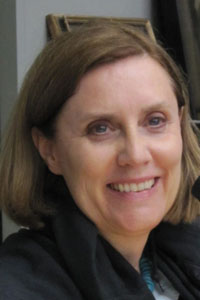
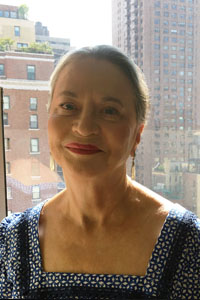
November 8, 2021, at 6:00pm
Series: The Roberta and Richard Huber Colloquium
Speakers: Margaret E. Connors McQuade, Deputy Director and Curator of Decorative Arts of The Hispanic Society Museum & Library and Edward J. Sullivan, Deputy Director of the Institute of Fine Arts and the Helen Gould Shepard Professor in the History of Art
learn more about the European Craze for Burnished Pottery of the Americas watch Margaret E. Connors McQuade's talk online [opens in new window]
Búcaros de las Indias describes the burnished pottery traditions of Mexico, Panama, and Chile that were among the most highly prized ceramic wares of some of the great Europe noble collections during the 17th and 18th centuries. While similar Portuguese búcaros were also collected at this time, búcaros de las Indias were especially coveted for their exotic forms as well as their aromatic, evaporative, gastronomic, and medicinal qualities. Búcaros appear in Spanish and viceregal 17th and 18th century paintings and are described by many contemporary writers. The Florentine scholar and scientist Lorenzo Magalotti (1637-1712) was perhaps the greatest admirer of the búcaros tradition, having spent years observing European collections and forming a collection of his own. His account, therefore, provides wonderful insight into the craze for the ceramic wares. This lecture will look at the production and circulation of the diverse wares and offer new insights through close analysis of the Hispanic Society collections as well as examples found in other museum collections and archaeological excavations.
Margaret E. Connors McQuade is the Deputy Director and Curator of Decorative Arts of The Hispanic Society Museum & Library, where she has worked since 1993. In 2005, she received her Ph.D. in art history from the Graduate Center at CUNY. In addition to a series of small-scale exhibitions at the Hispanic Society, Margaret curated the exhibitions, Talavera Poblana: Four Centuries of a Mexican Ceramic Tradition (Americas Society 1999), and Alcora en New York: La colección de cerámica de Alcora (Museo de Bellas Artes de Castellón de la Plana, and Museo de Bellas Artes, Valencia, 2005). She also has contributed to a number of exhibition catalogues, including, Visions of the Hispanic World: Treasures from the Hispanic Society of America. As Deputy Director, she is charged with overseeing capital projects at the Hispanic Society.
November 9, 2021, at 6:00pm
Series: Pre-Columbian Society of New York
Speaker: Nawa Sugiyama, Assistant Professor, Department of Anthropology, University of California, Riverside
Title: The Power and Agency of Corporal Animal Forms: Ritualized Animals from Copan, Honduras
Description: Throughout Mesoamerica, corporal animal forms (a term encompassing live animals, animal-derived by-products, and artifacts made from animal bodies) were ascribed with proprietary agency. They were important mediators of power, were integral to the social identity of their users, and encapsulated contemporary sociopolitical circumstances. A zooarchaeological and isotopic investigation of three ritual deposits at the Classic Maya center of Copan, Honduras (AD 426-82) demonstrates the processes by which corporal animal forms were prominent actors in the ritual arena through a formal process of commingling and translating animal body parts, in some cases materializing prominent actors of world-creation (Starry Deer-Crocodile), and in others reifying regal power ascribed to felids to the 16th and final ruler of Copan through extravagant ritual sacrifice.
November 10, 2021, at 6:00pm
Series: Archaeological Excavations at Samothrace
Title: Current Research Initiatives in the Sanctuary of the Great Gods on Samothrace
Description: In this lecture, Bonna D. Wescoat will present the team's current research initiatives centered on the interaction of landscape, architecture, materiality and human movement, which, aided by the use of 3D modeling, are reshaping our understanding of the Sanctuary of the Great Gods on Samothrace.
Bonna D. Wescoat is Director of Excavations in the Sanctuary of the Great Gods, Samothrace, a project jointly sponsored by the Institute of Fine Arts of NYU and Emory University. Wescoat, Samuel Candler Dobbs Professor of Art History at Emory University, currently serves as the Interim Director of the Michael C. Carlos Museum.
November 12, 2021, at 6:30pm
Series: China Project Workshop
Description: Hui-wen Lu, Graduate Institute of Art History, National Taiwan University, will present on Reliving History and Shaping Memory: Tang Remains and Song Scholars in the Old Capital Chang’an. The discussion will be moderated by Jonathan Hay (The Institute of Fine Arts, NYU).
November 15, 2021, at 6:00pm
Title: Summer Projects Day III: Objects and Paintings Conservation Projects
The Institute of Fine Arts invites you to our final evening of presentations from current conservation students on their summer 2021 work projects.
Presentations will include:
Adrienne Gendron
Objects Conservation at the Alaska State Museum
Ameya Grant In the Field: The Archaeological Exploration of Sardis, Turkey
Isabelle Lobley
Locked and Loaded: Firearms Conservation at the Buffalo Bill Center of the West
Kayla Metelenis
Close looking: conservation treatment and teaching at the Solomon R. Guggenheim Museum
Laura Richter
Conserving the Garnsey Murals at the St. Louis Art Museum
Ruth Waddington
A Summer with the Kress Collection: Conserving a 13th Century Sienese Dossal
There will be a brief question and answer session following the final presentation.
November 16, 2021, at 6:30pm
Series: The Roberta and Richard Huber Colloquium
Speakers: Florina H. Capistrano-Baker, consulting curator and special projects consultant, the Ayala Museum (Philippines), and Edward J. Sullivan, Deputy Director of the Institute of Fine Arts and the Helen Gould Shepard Professor in the History of Art
Title: Transpacific Engagements: Transcultural Entanglements and Philippine Visual Culture
Description: This talk will attempt to illuminate the Philippines’ transcultural artistic heritage formed by centuries of maritime engagements with diverse cultures in Asia, the Americas, and Europe. The arrival of Spanish colonizers in the sixteenth century extended early trade networks in the Indian Ocean and South China Sea, stretching these ancient routes across the Pacific to Latin America, thence to Europe. With Manila as the fulcrum of this early global exchange popularly known as the Manila-Acapulco Galleon Trade (1565-1815), local societies exchanged raw materials, finished products, art works, concepts, and language in multi-directional circulations of culture that mutated in myriad ways.
Florina H. Capistrano-Baker will argue that defining Philippine art and identity is not simply a matter of peeling away cultural layers, for the essence of Filipino-ness is imbricated in the intertwined layers of external stimuli as Asian, European, and American empires successively and/or simultaneously attempted to draw the archipelago into their rival spheres, creating cultural entanglements that have become intrinsic to Philippine visual culture. Specifically, she will discuss recently available archaeological gold objects that demonstrate close links to Hindu-Buddhist South and Southeast Asian neighbors before Spanish colonization and conversion to Christianity; and examine how these pre-colonial traditions gave way to Hispano-Filipino iterations of intersecting Indigenous concepts and newly introduced European ideas.
Florina H. Capistrano-Baker received her Ph.D. from the Department of Art History and Archaeology at Columbia University. She was formerly museum director of the Ayala Museum (Philippines) where she is currently consulting curator and special projects consultant. Since 2000, her research has focused on Philippine specificities within a metanarrative of global exchange between the 10th-13th and 16th-19th centuries. Her book Philippine Ancestral Gold (NUS Press and Ayala Foundation, 2011) documents previously unpublished material suggesting early trade with neighbors in the Indian Ocean and South China Sea. In 2015 she co-curated the exhibition “Philippine Gold: Treasures of Forgotten Kingdoms” at the Asia Society Museum and wrote the exhibition catalogue of the same title (Asia Society, 2015). She is co-editor with Meha Priyadarshini of the volume Transpacific Engagements: Trade, Translation, and Visual Culture of Entangled Empires, 1565-1898 recently published by Ayala Foundation, the Getty Research Institute, and the Kunsthistorisches Institut in Florenz (2020).
November 17, 2021, at 6:00pm
Series: Judith Praska Distinguished Visiting Professor In Conservation Lecture
Title: Pictures at an Exhibition: The Perception of Color in the Museum Environment
Speaker: Steven Weintraub
When we listen to different performances of a musical score, we hear the same notes, but our experience of the music varies with each rendition. Although there is no single “correct” way to perform the score, there are many ways to diminish the quality of the experience. Similarly, as we view pictures at an exhibition, the conditions of the exhibition will have a major impact on our experience of the works of art on display. Steven Weintraub will highlight key factors that influence the appearance of colors and explore options to improve the visitor’s experience of “pictures at an exhibition."
Steven Weintraub is the founder and Principal of Art Preservation Services (APS), established in 1988. He specializes in the preservation of museum collections. In addition to environmental consultation work for museums, he has done pioneering research in the areas of museum lighting and museum microclimates. The primary focus of his research on perception of color is to provide a scientific basis for establishing a balance between the need to minimize light-induced damage on artworks without sacrificing the qualitative experience of viewing art in a museum setting. Weintraub holds a B.A from Colgate University, and an M.A. in Art History and a Certificate in Conservation from the Institute of Fine Arts, New York University.
November 23, 2021, at 6:00pm
Series: Artists at the Institute
Speaker: Sarah Oppenheimer
Title: FE_20211123 Radiant Points
Sarah Oppenheimer is an architectural manipulator. Transforming a museum visitor into an agent of spatial change, Oppenheimer creates a field of action within the time-based system of a living building.
Recent solo projects include Sensitive Machine (Wellin Museum 2021), N-01 (Kunstmuseum Thun 2020), S-337473 (Mass MoCA 2019), S-337473 (Wexner Center for the Arts 2017), S-281913 (Pérez Art Museum Miami 2016), S-399390 (MUDAM Luxembourg 2016) and 33-D (Kunsthaus Baselland 2014).Her work has been exhibited at such venues as ZKM, the Baltimore Museum, the Andy Warhol Museum, the Museum of Contemporary Art San Diego, Art Unlimited at Art Basel, the Mattress Factory; the Drawing Center; and the Sculpture Center. Oppenheimer is currently a senior critic at the Yale University School of Art.
November 30, 2021 at 6:00pm
Series: Latin American Forum
Title: José Antonio Fernández-Muro and Sarah Grilo Reconsidered: Argentine Abstraction in the United States
A Panel with Karen Grimson, Megan Kincaid, Juan Gabriel Ramírez Bolívar, and Delia Solomons
Moderated by Edward J. Sullivan
Description: During their lifetimes, Argentine artists Sarah Grilo (1919–2007) and José Antonio Fernández-Muro (1920–2014) made significant contributions to global abstraction. Forming part of a generation of artists working in Buenos Aires following the emergence of concrete art in the 1940s, this married couple offered distinct stylistic contributions that helped expand the genre. Their work was shown internationally, and they served as emissaries of the Argentine avant-garde at notable exhibitions and biennials. At the height of their prominence in Argentina, Grilo and Fernández-Muro relocated to New York in 1962, where they continued to push abstraction beyond its previous boundaries.
This panel will present new scholarship on the activity of Grilo and Fernández-Muro in New York, considering both their individual artistic developments and their role in relation to Latin American art’s reception in the United States during the 1960s. Grappling with existing interpretations of their careers that celebrate their time in New York as a breakthrough moment, this panel will examine their achievements through alternate methodological and historical approaches that displace the center-periphery narrative, while also considering questions of race, nationality, and gender.
In her presentation, Megan Kincaid will introduce her research for the exhibition José Antonio Fernández-Muro: Geometry in Transfer at ISLAA, locating the New York years within Grilo’s and Fernández-Muro’s sweeping careers. Delia Solomons will then contextualize how their work circulated within the surge of survey exhibitions dedicated to Latin American art in the United States amid inter-American Cold War frictions between 1959 and 1968. In his lecture, Juan Gabriel Ramírez Bolivar will trace the evolution of the circle as a geometric and figurative device across Fernández-Muro’s New York paintings. Karen Grimson will then present on Grilo’s work from 1962 to 1970, explicating how her use of language, initiated during her New York residency, functioned as a proclamation of discursive agency. The presentations will be followed by a discussion moderated by Edward J. Sullivan.
The program is organized in conjunction with José Antonio Fernández-Muro: Geometry in Transfer, curated by Megan Kincaid, at ISLAA. The event will be conducted in English on Zoom, and a recording will be made available after it takes place.
ABOUT THE SPEAKERS
Karen Grimson is an art historian specializing in Latin American abstraction. She holds a degree in art history from the Universidad de Buenos Aires and an MA from the Courtauld Institute, London. Between 2011 and 2020, she worked at the Museum of Modern Art, New York, developing acquisitions and exhibitions of art from Latin America. Her writings on the work of Sarah Grilo have been published by ISLAA and Galerie Lelong, Paris. She also contributed articles to the publications Among Others: Blackness at MoMA, Joaquín Torres-García: The Arcadian Modern, Being Modern, and MoMA Highlights, as well as the online portals MoMA Magazine and post: notes on art in a global context.
Megan Kincaid is an art historian and curator of modern and contemporary art. She is currently an adjunct instructor at New York University and a PhD candidate at The Institute of Fine Arts, New York University. She holds a BA in art history from Columbia University, summa cum laude, Phi Beta Kappa. Kincaid co-curated the exhibitions Cauleen Smith, H-E-L-L-O: To Do All At Once (2021) and Fanny Sanín’s New York: The Critical Decade, 1971–1981 (2020–21), both at The Institute of Fine Arts, New York University, and assisted with the curation of Charles White: A Retrospective (2018–19) at the Museum of Modern Art, New York. The Museum of Modern Art and New York University, among others, have published her writing. Most recently, she organized an exhibition of early drawings by Susan Te Kahurangi King and published an essay on new sculptures by Daniel Lind-Ramos.
Juan Gabriel Ramírez Bolívar is a PhD candidate at The Institute of Fine Arts, New York University. He focuses on modern Latin American art and artistic exchanges between Europe and Latin America. Born in Bogotá, Juan Gabriel received his BA in history at the Universidad Nacional de Colombia. In 2013, he was granted an Erasmus Mundus Scholarship to study at the master’s program in comparative history at Charles University in Prague and social sciences at the School for Advanced Studies in Social Sciences (EHESS) in Paris. At the Institute, he has organized numerous events with IFA Latin America and has been part of the editorial board of the peer-reviewed journal Lapis: The Journal of the Institute of Fine Arts.
Delia Solomons is assistant professor of art history at Drexel University. She specializes in modern and contemporary art of the Americas, focusing on intersections between exhibitions, politics, and visual culture in the 1960s. Her research has appeared in Art Bulletin, MoMA’s post: notes on art in a global context, Journal of Curatorial Studies, and The Americas Revealed: Collecting Colonial and Modern Latin American Art in the United States. Her book xCold War in the White Cube: U.S. Exhibitions of Latin American Art (1959–68) will be published by Penn State University Press in 2023. Her most recent research is devoted to Marisol’s sculpture.
December 1, 2021, at 3:00pm
Series: Time-Based Media Lecture
Title: Perspectives from a Private Collection: How the Thoma Foundation Collects and Conserves Digital, Video and Media Art
Description: The Carl & Marilynn Thoma Foundation, founded in 2014, confronts conservation and display challenges by actively performing solutions on its growing collection of 336 artworks by 176 artists in Digital, Video and Media Art. This talk brings together the Foundation’s collection care team and founder to share insights on how they collaborate with each other, artists, and other experts. Collector Carl Thoma discusses why certain artworks draw his attention, and how he is supporting programs that serve to strengthen the sustainability and appreciation of art and technology. Curator Jason Foumberg reviews the Foundation’s thematic approach to exhibitions, and the direction of its acquisition program. Collections Manager Kate Weinstein explores technical, preparatory and conservation issues across the Foundation’s spectrum of vintage and emerging technologies. Thomafoundation.org
Carl D. Thoma is an art collector, philanthropist, and managing partner and founder of Thoma Bravo, LLC. An early player in the field of venture capital beginning with Golder, Thoma in 1980, Carl has applied his eye for entrepreneurial talent to collecting Modern and Contemporary paintings, and most recently in the fields of Digital Art and Light & Space.
In his chosen profession, Carl has been acknowledged in The Wall Street Journal, Business Week, and Fortune for his investment leadership. He has chaired the National Venture Capital Association and the Illinois Venture Capital Association, and served on the boards of Illinois Institute of Technology and Stanford Graduate School of Business Advisory Council. He is currently on the Boards of the McKnight Center for the Performing Arts, the Terra Foundation for American Art, and SITE Santa Fe; is a member of the Blanton National Leadership Board; and is a commissioner for the National Portrait Gallery. Carl Thoma earned his bachelor’s degree from Oklahoma State University and his MBA from Stanford’s Graduate School of Business.
Kate Weinstein is the Collections Manager & Registrar at the Thoma Foundation, and is based in Chicago, IL. Kate oversees the collection care for the Foundation’s five collection areas, including the Digital & Media Art collection. Along with this, Kate oversees the Foundation’s policies and procedures for conservation, storage, shipping, loans, and acquisitions. She received her MA in Modern Art History, Theory + Criticism from the School of the Art Institute of Chicago (2012) where she wrote her thesis on animated GIFs.
Jason Foumberg is the Thoma Foundation Curator of Digital & Media Art. Since 2014, he has curated annual exhibitions at the Foundation’s public spaces in Santa Fe and Chicago, as well as touring exhibits of digital art with U.S. museum partners. Jason advises on the Foundation’s art collection and grant programs. He is based in Chicago, Illinois.
December 6, 2021, at 6:00pm
Series: Archaeological Excavations at Aphrodisias
Title: New Discoveries at Aphrodisias in 2021
Description: Join us to hear from Roland R. R. Smith about the most recent work carried out by NYU-IFA at Aphrodisias in southwest Turkey, in collaboration with Oxford University. Aphrodisias is one of the most important sites of the Roman Empire in the eastern Mediterranean, with superbly preserved public buildings and monuments. Marble-carving was a noted Aphrodisian specialty in antiquity, and the excavated remains of the city’s statues, sarcophagi, and architectural reliefs are both abundant and of spectacular quality.
In spite of COVID and terrible fires across Turkey, the team was able to carry out a rewarding nine-week research season at Aphrodisias last summer that produced a lot of exciting results. The headline achievements were in the Civil Basilica and Tetrapylon Street, and much other good work was done for the Sebasteion, the Place of Palms, and our marble sarcophagi. There were important new finds – most dramatic, a new late antique philosopher bust.
December 7, 2021, at 6:30pm
Series: Ancient Art and Archaeology
Title: Sign and Sense in Mid-Republican Rome
Speaker: Dan-el Padilla Peralta, Associate Professor of Classics, Princeton University
Description: This lecture will preview a manuscript in progress on the semiotics of the Roman Middle Republic. Inspired in conception and execution by Jurij Lotman and Boris Uspenskij's The Semiotics of Russian Culture, the manuscript scrutinizes those sign systems through which Romans and becoming-Romans of the Middle Republic communicated with each other and with the wider social and naturecultural world. For this lecture, I will focus on two sign systems: (1) divine figural representations (2) human names. Although each of these sign systems privileges particular media for their routing of communications, what I will emphasize through several case studies is the multi- and intermediality of mid-republican Roman culture.
Dan-el Padilla Peralta is Associate Professor of Classics at Princeton University, where he is associated with the Department of African American Studies and affiliated with the Programs in Latino Studies and Latin American Studies and the University Center for Human Values. He is the author of Undocumented: A Dominican Boy’s Odyssey from a Homeless Shelter to the Ivy League (Penguin 2015) and Divine Institutions: Religions and Community in the Middle Roman Republic (PUP 2020); and he has co-edited Rome, Empire of Plunder: The Dynamics of Cultural Appropriation (CUP 2017). Current projects include a study of 338 BCE and the origins of Roman imperialism (co-authored with Denis Feeney and under contract with HUP), A People’s History of Rome (under contract with PUP), a volume on new approaches to the Middle Roman Republic (co-edited with Seth Bernard and Lisa Mignone), and a manifesto on race and racism in the disciplinary identity of Classics (co-authored with Sasha-Mae Eccleston). He has written for the public-facing Classics journal Eidolon and published pieces for The Guardian, Matter, Vox, the NYT, Fabulist, and diaphanes.
December 13, 2021, at 6:00pm
Series: Artists at the Institute
Speaker: Lu Yang
Title: Lu Yang’s Digital Descending
What constitutes the Self? Our eyes, ears, and every physical part of our body? Or our self-consciousness? For a long time, human beings have been committed to challenging the limitations of their physical bodies and to transcending their mortal flesh through technology. The genderless avatar, DOKU, is Lu Yang’s attempt to find new ways to keep the cycle of life going in cyberspace, calling it a “digital reincarnation”. DOKU is based on a high-tech face scan of the artist’s own face, capable of reproducing expressions with almost 100 percent accuracy. It appears in six 3-D environments, each representing one of the six realms of rebirth in a Buddhist concept of reincarnation. The lecture introduces Lu Yang’s virtual parallel world inhabited by gods and demons, heroes, warriors, and cyborgs inspired by universes hailing from the realms of gaming, manga, and Eastern religions.
Lu Yang (b. Shanghai, China) is a multimedia artist based in Shanghai. Mortality, androgyny, hysteria, existentialism and spiritual neurology feed Lu’s jarring and at times morbid fantasies. Also taking inspiration and resources from Anime, gaming and Sci-fi subcultures, Lu explores his fantasies through mediums including 3D animation, immersive video game installation, holographic, live performances, virtual reality, and computer programming. Lu has collaborated with scientists, psychologists, performers, designers, experimental composers, Pop Music producers, robotics labs, and celebrities throughout his practice. Lu Yang has held exhibitions at UCCA (Beijing), MWoods (Beijing), Cc Foundation (Shanghai), Spiral (Tokyo), Fukuoka Museum of Asian Art (Fukuoka, Japan), Société (Berlin), MOCA Cleveland (Cleveland, Ohio). He has participated in several international biennials and triennials such as 2021 Asia Society Triennial (New York), 2012 & 2018 Shanghai Biennial, 2018 Athens Biennale, 2016 Liverpool Biennial, 2016 International Digital Art Biennale (Montreal), Chinese Pavilion of the 56th Venice Biennale, and 2014 Fukuoka Triennial. In 2020, Lu Yang was included in Centre Pompidou’s exhibition Neurons, simulated intelligence in Paris. In 2019, Lu was the winner of the 8th BMW Art Journey and started the Yang Digital Incarnation project.



